




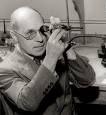
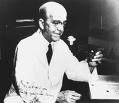


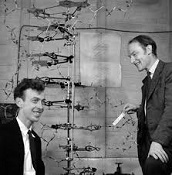
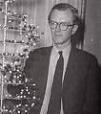




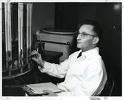

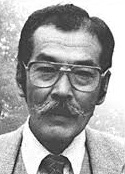


















TLW's Geneticistscope™ (Geneticist Historyscope) |
By T.L. Winslow (TLW), the Historyscoper™ |
© Copyright by T.L. Winslow. All Rights Reserved. |
Original Pub. Date: Jan. 17, 2017. Last Update: Jan. 7, 2021. |


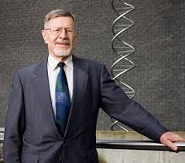

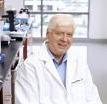





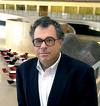

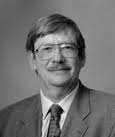

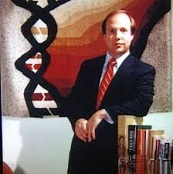
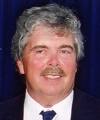


Westerners are not only known as history ignoramuses, but double dumbass history ignoramuses when it comes to genetics, microbiology, genetics history, and geneticist history. Since I'm the one-and-only Historyscoper (tm), let me quickly bring you up to speed before you dive into my Master Historyscope.

In 1862 German botanist Julius von Sachs (1832-97) discovers that starch is produced by photosynthesis. In 1865 he discovers that chlorophyll in plants is found only in small bodies (later termed chloroplasts), and that chlorophyll is the key compound in combining carbon dioxide and oxygen to produce starch while releasing more oxygen.

In 1865 Austrian Augustinian monk (abbot) Gregor Johann Mendel (1822-84) pub. Mendel's Laws of Heredity ("In any given pair of contrasting traits, one trait is dominant and the other recessive" et al.), establishing the principle of basic units called genes, based on laborious experiments begun in 1857 on peas in the monastery garden in Brunn, incl. the principles of unit characters, dominance and recessiveness, segregation, and free assortment; pub. in the obscure Transactions of the Brunn Nat. History Society, they go almost unnoticed by biologists until 1900; meanwhile Charles Victor Naudin (1815-99) of France finds certain regularities in the inheritance of characteristics in plant hybridization experiments, but misses the big picture - and then it's McDonald's McGriddles, breakfast snack for you, bedtime snack for me?
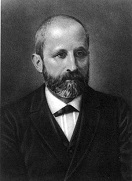
In 1869 Swiss biologist-physician Johannes Friedrich Miescher (1844-95) discovers a weak acid in white blood cell nuclei, which he calls nuclein; in 1871 he isolates it; it turns out to be nucleic acid (DNA); he later discovers that CO2 concentrations in blood regulate breathing.
In 1883 German biochemist Ludwig Karl Martin Leonhard Albrecht Kossel (1853-1927), teacher of Friedrich Miescher at the U. of Strasbourg moves to the U. of Berlin, going on to isolate the five constituent organic compounds in nucleic acid incl. adenine, cystosine, guanine, thymine, and uracil; he later discovers histidine and isolates theopylline from tea, and predicts the polypeptide nature of the protein molecule; "The processes of life are like a drama, and I am studying the actors, not the plot. There are many actors, and it is their characters which make this drama. I seek to understand their habits, their peculiarities."

In 1888 German Bavarian biologist Theodor Heinrich Boveri (1862-1915) discovers the centrosome, which he calls the "special organ of cell division", later discovering the phenomenon of chromatin diminution; in 1902 he proposes that a cancerous tumor starts with a single cell in which the chromosome makeup becomes scrambled, causing it to divide uncontrollably, caused by radiation, chemicals, or pathogens, which is proved true in 1915 by Thomas Hunt Morgan.
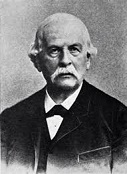
In 1889 German pathologist-histologist Richard Altmann (1852-1900) purifies protein-free DNA, coining the term "nucleic acid' to supplant Friedrich Miescher's term "nuclein", later discovering it contained a large amount of protein; in 1890 he pub. "The Elementary Organism" (Die Elementarorganismen), describing filaments he found in nearly all cell types using a new staining technique, which he calls "bioblasts" but are later found to be mitochondria.




It's a breeze to correct the botanists who laid an egg? In 1900 European botanists Hugo Marie De Vries (1848-1935) of Holland, Karl (Carl) Erich Correns (1864-1933) of Germany, and Erich Tschermak von Seysenegg (von Tschermak-Seysenegg) (1871-1962) of Austria discover and confirm Mendel's 1865 research reports concerning pea plants and how inherited traits are determined by two "hereditary units", leading them to connect the new chromosomes discovered this year in cell nuclei to his work; English botanist William Bateson (1861-1926) becomes the main popularizer, coining the term "genetics" in 1905; Erich's brother Armin Eduard Gustav Tschermak von Sysenegg (1870-1952) also contributed, but didn't take credit? - this morning my hair was straight, then Greg called?




On Jan. 16, 1902 the existence and function of hormones are discovered by English physiologist Ernest Henry Starling (1866-1927) of University College, London; Starling and English physiologist Sir William Maddock Bayliss (1860-1924) discover the hormone secretin; Am. geneticist Walter Stanborough Sutton (1877-1916) and German biologist Theodor Heinrich Boveri (1862-1915) independently (via work with sea urchins) propose the Boveri-Sutton Chromosome Theory that chromosomes contain genetic info.; Sutton coins the term "gene"; Boveri theorizes that a cancerous tumor starts with a cell that gets its chromosomes scrambled; also in 1902 Bayliss discovers the Bayliss Effect (Myogenic Response), whereby blood vessels contract or distend based on blood pressure to create an autoregulation mechanism.
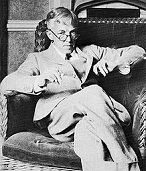
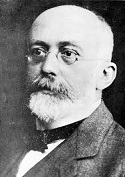
In 1908 English mathematician Godfrey Harold Hardy (1877-1947) and German physician Wilhelm Weinberg (1862-1937) independently propose the Hardy-Weinberg Equilibrium Model (Principle) of the frequency of alleles in a gene pool, stating that they will remain constant through the generations in the absence of genetic drift, mate choice, assortative mating, natural selection, sexual selection, mutation, gene flow, meiotic drive, genetic hitchhiking, pop. bottleneck, founder effect, and inbreeding; known as the Hardy Principle until 1943 when Weinberg's more complete paper is discovered.

In 1909 Belgian scientist (Roman Catholic priest) Frans Alfons Janssens (1865-1924) first describes chromosomal crossover (crossing over), calling it "chiasmatype", making a fan of Columbia U. geneticist Thomas Hunt Morgan, who applies it to his research on the heredity of Drosophila melanogaster.

In 1911 after the 1900 rediscovery of Mendelian inheritance leads him to study the fruit fly Drosophila melanogaster in his Fly Room at Columbia U., Lexington, Ky.-born geneticist Thomas Hunt Morgan (1866-1945) (Doubting Thomas Hunts for More Gain?) announces his theory of Genes (a word he coined in 1904), and how they are linearly arranged on the chromosome and can be mapped, winning him the 1933 Nobel Med. Prize for linkage mapping; he shares the prize money with collaborators Calvin Bridges and Alfred Sturtevant.

In 1911 Francis Peyton Rous (1879-1970) of the U.S. discovers a viral cause of cancer.
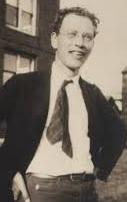
In 1911 Jacksonville, Ill.-born geneticist Alfred Henry Sturtevant (1891-1970), student of Thomas Hunt Morgan invents the procedure of linkage mapping based on the crossing-over frequency; in 1913 he constructs the first genetic map of a chromosome after determining that they are arranged in a linear fashion like beads on a necklace, with each gene in a fixed location (locus).
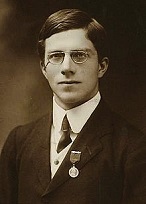
In 1918 East Finchley, London, England-born geneticist-statistician-eugenicist Sir Ronald Aylmer Fisher (1890-1962) pub. the paper The Correlation between Relatives on the Supposition of Mendelian Inheritance, proposing the Infinitesimal (Polygenic) Model of genetics, in which continuous variation of phenotypic traits could be the result of Mendelian inheritance among an infinitely large number of genes that each make an infinitely small contribution to the phenotype (not excluding environmental factors), coining the statistical term "variance" and becoming the first step toward establishing pop. genetics and quantitative genetics, reconciling the discontinuous nature of natural selection with gradual evolution; it contains the soundbyte that if a trait is polygenic, "the random sampling of alleles at each gene produces a continuous, normally distributed phenotype in the population." In 1924 Fisher pub. the paper "On a distribution yielding the error functions of several well known statistics", starting with the Gaussian distribution and progressing through Pearson's chi-squared test and William Gosset's Student's t-distribution to his own F-distribution. In 1925 Fisher pub. Statistical Methods for Research Workers (14th ed. 1970), which becomes a std. textbook, explaining Fisher's method for data fusion along with the p-value, with the soundbyte: "The value for which P = 0.05, or 1 in 20, is 1.96 or nearly 2 ; it is convenient to take this point as a limit in judging whether a deviation is to be considered significant or not." In 1930 Fisher pub. The Genetical Theory of Natural Selection, reviving Charles Darwin's idea of sexual selection and founding Population Genetics. In 1935 Fisher pub. The Design of Experiments, introducing the concept of the null hypothesis in the Lady Tasting Tea Experiment. In 1936 Fisher analyzes Gregor Mendel's data using the Pearson's chi-squared test, concluding that the predicted ratios were too perfect, implying fiddling with the data. In 1936 Fisher founds Discrimination Analysis, introducing the Iris Flower Data Set. In 1937 he pub. the paper "The wave of advance of advantageous genes", proposing Fisher's Equation to describe the spatial spread of an advantageous allele, advancing pop. genetics. "Natural selection is a mechanism for generating an exceedingly high degree of improbability."
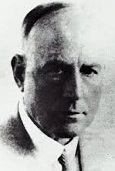
In 1923 English bacteriologist Frederick Griffith (1877-1941) observes that DNA carries genes that are responsible for pathogenicity; in Jan. 1928 he reports Griffith's Experiment, demonstration that Streptococcus pneumoniae can transform from one strain into another, becoming the first demonstration of bacterial transformation where a bacterium distinctly changes in form and function, attributing it to a "transforming principle/factor", which is later found to be DNA; he also discovers that hereditary material from dead bacteria can be incorporated into live bacteria.

In 1927 Am. geneticist Hermann Joseph Muller (1890-1967) discovers that the rate of appearance of mutations in fruit flies is increased by exposure to X-rays, and pub. the paper "The Problem of Genetic Modification" at the Fifth Internat. Congress of Genetics in Berlin, making him an internat. celeb; by the 1950s this isn't such good news?

In 1928 Ukrainian-born Soviet biologist-agronomist Trofim Denisovich Lysenko (1898-1976) pub. a paper on vernalization, chilling winter wheat seeds to turn them into spring wheat seeds, making him a star with Joseph Stalin, who elevates him to a position of power that he abuses to push Lysenkoism, which rejects Mendelian genetics and claims that the hereditary factors are not only in the nucleus but in the cytoplasm ("living protoplasm"), politicizing science and setting back genetics in the Soviet Union by decades (until 1964).

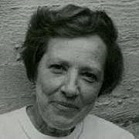
In 1931 Am. geneticists Barbara McClintock (1902-92) and Harriet Baldwin Creighton (1909-2004) demonstrate chromosomal crossover (crossing over) (exchange of genetic material during sexual reproduction) as the cause of genetic recombination; in 1974 after McClintock's 1948 female-only discovery in maize is ignored until some men can take the credit, Am. scientists McClintock, Alan E. Jacob, and Robert W. Hedges officially discover Transposons, genetic elements that can move from one plasmid or its chromosome to another; McClintock wins the 1983 Nobel Med. Prize.
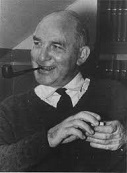
In 1933 Belgian biochemist Jean Louis Auguste Brachet (1909-88) concludes from study of virgin sea urchin eggs that DNA ("thymus nucleic acid") is found in the cell nucleus, and RNA ("yeast nucleic acid") in the cytoplasm.


In 1935 Wahoo, Neb.-born geneticist George Wells Beadle (1903-89) begins work on the biochemistry of the genetics of the bread mold Neurospora, exposing it to X-rays to cause mutations, showing that they cause changes in specific enzymes involved in metabolic pathways, proposing the One Gene One Enzyme Hypothesis in 1941 along with Boulder, Colo.-born geneticist Edward Lawrie Tatum (1909-75), founding molecular biology and earning them a share of the 1958 Nobel Med. Prize.

In 1940 Am. bacteriologist Alfred Day Hershey (1908-97) observes that when two different strains of bacteriophage infect the same bacteria, the two viruses may exchange genetic info.
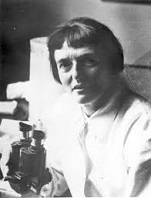
In 1942 German geneticist Charlotte "Lotte" Auerbach (1899-1994) (student of Hermann Joseph Muller) et al. discover that mustard gas can cause mutations in fruit flies, founding the science of Mutagenesis; in 1948 she uses mutations in chalcone isomerase activity to affect substrate specificities in Dianthus caryophyllus (carnation) flowers, pioneering the field of Chemogenetics.
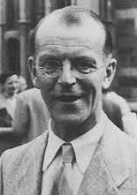
In 1943 after experimenting on the gigantic single-celled green algae Acetabularia since the 1930s, Danish-German biologist Joachim August Wilhelm Hammerling (Hämmerling) (1901-80) discovers that the nucleus contains the genetic info. and controls development, proving the existence of morphogenetic substances (mRNP).


In 1943 Italian microbiologist Salvador Edward Luria (1912-91) of Indiana U. and German-Am. biophysicist Max Ludwig Henning Delbruck (Delbrück) (1906-81) of Vanderbilt U. (colleagues of Alfred Day Hershey) perform the Luria-Delbruck (Delbrück) Experiment (Fluctuation Test), which shows that genetic mutations arise in the absence of Darwinian selection, rather than in response to it, i.e., by random mutation not adaptive change, bringing bacteria under Darwin's theory, winning them the 1969 Nobel Med. Prize.; Luria also shows that bacterial resistance to phages (viruses) is genetically inherited.



In 1944 Canadian-born Am. physician Oswald Theodore Avery Jr. (1877-1955), Canadian-Am. geneticist Colin Munro MacLeod (1909-72), and Am. geneticist Maclyn McCarty (1911-2005) pub. the result of their Avery-MacLeod-McCarty Experiment, which determines that nuclear DNA acts as the carrier of genetic info., and transmutes one type of pneumococcus bacteria into a 2nd type by DNA transfer, founding Molecular Biology - how many years until we're all mixed bags of DNA from Noah's Ark?

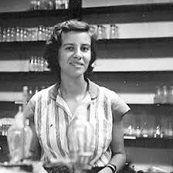
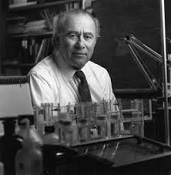
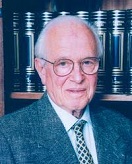
In 1947 with the help of his advisor Edward Tatum, Montclair, N.J.-born molecular biologist Joshua Lederberg (1925-2008) earns his doctorate from Yale U. by showing that the bacterium Escherichia coli doesn't just clone its DNA but enters a sexual phase during which it can share genetic info. through bacterial conjugation, earning him the 1958 Nobel Physiology Prize. In 1951 Lederberg and New York City-born Norton David Zinder (1928-2012) prove that genetic material can be transferred from one strain of the bacterium Salmonella typhimurium to another using viral material known as a bacteriophage as an intermediary step in what is called Transduction; Zinder goes on to discover the first bacteriophage containing RNA as its genetic material. In 1951 Joshua's Bronx, N.Y.-born microbiologist wife (1946-68) Esther Miriam Zimmer Lederberg (1922-2006) discovers Lambda Phage, a bacteriophage that can infect and reproduce in some non-immune strains of E. coli, which when mixed with immune strains can become dormant in the "lysogenic" state until it is activated in the "lytic" state, causing the dormant lambda genome to be called the "prophage". In 1956 Joshua and Esther Lederberg along with W. Laurance Morse discover specialized transduction in the lambda phage infection of E. coli, explaining how bacteria of different species can gain resistance to the same antibiotic quickly. In 1956 Joshua and Esther Ederberg and Italian geneticist Luigi Luca Cavalli-Sforza (1922-2018) pub. their discovery of the bacterial Fertility Factor F (F-plasmid) (F sex factor). in E. coli, allowing genes to be transferred from one bacterium carrying it to another lacking it by conjugation; it is carried on the F-episome, becoming the first episome to be discovered.

In 1948 German geneticist Charlotte "Lotte" Auerbach (1899-1994) uses mutations in chalcone isomerase activity to affect substrate specificities.
In 1948 Roger Vendrely and Colette Vendrely report a "remarkable constancy in the nuclear DNA content of all the cells in all the individuals within a given animal species", which they regard as proof that genes are composed of DNA rather than protein, which in 1950 causes Hewson Sift to coin the term C-value (genome size); it is soon found that C-values vary enormously among spieces (up to 3.3K in animals and 1K in land plants) and bears no relationship to the presumed number of genes based on the organism's complexity, causing the term "C-value paradox" to be coined by C.A. Thomas Jr. in 1971, which is later resolved by the discovery of non-coding "junk" DNA, with the human genome having less than 2% protein-coding regions; in 2002 Canadian biologist T. Ryan Gregory of the U. of Guelph coins the term "C-value enigma" for the variation in the amount of non-coding DNA within the genomes of different eukaryotes.



On July 18, 1950 UNESCO releases The Race Question, written by English-born Jewish-Am. anthropologist Montague Francis Ashley-Montagu (Israel Ehrenberg) (1905-99), black Am. sociologist Edward Franklin Frazier (1894-1962) et al., questioning the validity of race as a biological concept and suggesting the substitution of "ethnic group"; revised eds. pub. in 1951, 1967, and 1978; English #1 geneticist-statistician-eugenicist (founder of modern statistical science) Sir Ronald Aylmer Fisher (1890-1962) is a notable dissenter, insisting that there are statistical racial differences, with the soundbyte: "Scientific knowledge provides a firm basis for believing that the groups of mankind differ in their innate capacity for intellectual and emotional development."

In 1950 motorcycle-loving English geneticist Oliver Smithies (1925-) discovers Gel Electrophoresis, a technique for separating protein molecules using an electric current applied to a starch gel matrix; actually, sucrose was used for it way back in the 1930s, but this process works better.



The Science of Biology gets its Trinity of Watson-Crick-and-I-forget? Scientific racism gets undermined beyond repair? On Feb. 28, 1953 Chicago-born U.S. biologist James Dewey Watson (1928-) and British Cambridge U. model-making molecular biologist Francis Harry Compton Crick (1916-2004) announce their discovery of "the secret of life", the neat transvestite double-helix structure of DNA, then pub. a 1-page article in the Apr. 25 issue of Nature, drooling "This structure has novel features that are of considerable biological interest", later sharing the 1962 Nobel Med. Prize for it with Kiwi physicist Maurice H.F. Wilkins (1916-2004), who verifies the structure with X-ray diffraction; meanwhile Wilkins' colleague Rosalind Elsie Franklin (1920-58) of Kings College, who also pub. an article in the Apr. 25 issue on her X-ray diffraction studies, and whose work allowed the discovery is left out of the prize - no wonder girls hate math? Too bad, Watson goes on to claim that melanin boosts sex drive, giving dark-skinned people stronger libidos, and that differences in avg. measured IQ between blacks and whites are due to genetics not environment, causing the PC police to target him, getting him suspended from his admin. responsibilities at Cold Spring Harbor Lab where he worked for almost 40 years, forcing him to apologize and retire, which doesn't stop him from repeating his assertion in a 2018 TV documentary, causing him to lose his honorary titles.

In 1953 French microbiologist Andre (André) Michael Lwoff (1902-94) discovers that a bacteriophage virus attaches itself to the chromosome of a bacterium, causing it to produce copies of the virus.

In 1955 Scottish biochemist Sir Alexander Robertus Todd (1907-97) determines the chemical makeup of nitrogenous bases, synthesizing adenosine triphosphate (ATP) and flavin adenine dinucleotide (FAD); he also determines the structure of Vitamin B12, going on to do ditto for Vitamin B1 and Vitamin E, contributing to the scientific knowledge of nucleotides and nucleotide co-enzymes and winning the 1957 Nobel Chem. Prize.

In 1955 Spanish-born Am. biochemist Severo Ochoa de Albornoz (1905-93) pioneers RNA synthesis, winning the 1959 Nobel Med. Prize.
In 1956 Amniocentesis is first used for the detection of prenatal genetic disorders by St. Mary's Hospital in England.


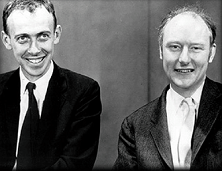
In 1957 using an isotope of nitrogen, Am. molecular biologists Matthew Stanley Meselson (1930-) and Franklin William "Frank" Stahl (1929-) perform the Meselson Stahl Experiment, "the most beautiful experiment in biology", which proves that DNA replication is semiconservative, i.e., each daughter cell contains one DNA strand from the original helix.

In 1957 Romanian-Am. cell biologist George Emil Palade (1912-) first describes Ribosomes in the endoplasmic reticulum, which perform biological protein synthesis, going on to share the 1974 Nobel Physiology Prize.
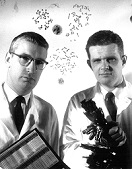
In 1959 Philly-born cancer researcher Peter Carey Nowell (1928-201) and Brockton, Mass.-born researcher David A. Hungerford (1927-93) independently discover the Philadelphia Chromosome (Translocation), an easy-to-detect genetic abnormality of chromosome 22 of lukemia patients, which aids diagnosis.


On May 15, 1961 German biochemist J. Heinrich Matthaei (1929-) of NIH in Bethesda, Md. performs the Poly-U Experiment, becoming the first person to understand the genetic code, going on to work with Am. biochemist Marshall Warren Nirenberg (1927-2010) to synthesize repeated nucleotide sequences leading to the production of repeated single amino acids; too bad, Matthaei is snubbed for a Nobel Prize - something about the Nuremberg Trials?





In 1961 South African biologist Sydney Brenner (1927-2019), French biologist Francois Jacob (1920-2013), and Am. biologists Matthew Stanley Meselson (1930-) and Franklin William Stahl (1929-) use phage-infected bacteria to show that ribosomes are the site of protein synthesis and are stable, proving the existence of Messenger RNA (mRNA), and elucidating the triplet nature of the code of protein translation, incl. how frameshift mutations occur when a number of nucleotides not evenly divisible by three are inserted or deleted; Jacob and Jacques Lucien Monod (1910-76) propose that control of enzyme levels in cells occurs through feedback on transcription, becoming the first example of a transciptional regulation system, winning them the 1965 Nobel Med. Prize; Brenner later discovers that the 1mm roundworm Caenorhabditis elegans is an ideal model organism for studying the genetics of animal development, winning him the 2002 Nobel Med. Prize.
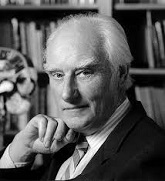

In 1961 British geneticist Francis Harry Compton Crick (1916-2004) and South African biologist Sydney Brenner (1927-2019) discover frame shift mutations (framing error) (reading frame shift), genetic mutations caused by insertions or deletions of a number of nucleotides in a DNA sequence that is not divisible by three.

In 1961 Canadian scientists James Edgar Till (1931-) and Ernest Armstrong McCulloch (1926-2011) prove the existence of Stem Cells by using radiation to destroy the blood cells of lab mice, then injecting bone marrow from genetically identical mice and observing that all types of blood cells are formed - talk about getting your strong arm and hand in the eager till and McCulling in earnest?

In 1962 Am. molecular biologist Sol Spiegelman (1914-83) develops the technique of Nucleic Acid Hybridization, allowing the detection of specific DNA and RNA molecules in cells. In 1966 he helps discover an enzyme that allows RNA molecules to duplicate themselves - Pandora's Box is opened?


In May 1963 white British-born high-IQ Am. Nobel Physics Prize winner William Bradford "Bill" Shockley (1910-89) gives a Shocking Speech on Race vs. IQ at Gustavus Adolphus College in Minn. suggesting that the people least competent to survive in the world are reproducing the fastest; a year later he claims in an interview with U.S. News and World Report that U.S. blacks as a group score 15 points lower on IQ tests than U.S. whites, and suggests that the cause is hereditary intellectual inferiority, stirring up a firestorm of controversy - and that therefore black genes are like a computer virus and if you want a better Internet, belong to White America Online with all the Bells and Whistles and Virus Protection, or is there an inverse relationship between IQ and penis size, and evolution is somehow stepping on its own dick? In 1966 English psychologist Sir Cyril Burt (1883-1971) pub. his research on 53 pairs of monozygotic twins, indicating that IQ levels are determined mainly by inheritance; too bad, he burns his records before he dies, allowing his critics (who are rocked to their socks by the implications, esp. with loose cannon William Shockley on deck) to claim that he falsified his data, while not wanting any more research done of course, until other studies reproduce his results, after which they only become more entrenched?

In 1963 Am. biologist Alexander Rich (1924-2015) discovers Polysomes, clusters of ribosomes that read a single strand of mRNA simultaneously.

In 1964 English evolutionary biologist William Donald "Bill" Hamilton (1936-2000) pub. Hamilton's Rule of Genetics (Inclusive Fitness Theory), that a costly action should be performed if its cost in fitness to the actor is less than the genetic relatedness between the actor and the recipient multiplied by the fitness benefit to the recipient; founds the field of Social Evolution.
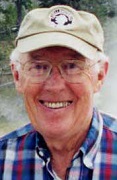
In 1966 Am. microbiologist Thomas Dale "Tom" Brock (1926-) studies the thermal springs in Yellowstone Nat. Park, discovering the hyperthermophile Thermus aquaticus, which yields the enzyme Taq polymerase, which later becomes useful for amplifying DNA.




In 1966 Am. biochemists Marshall Warren Nirenberg (1927-2010), Har Gobind Khorana (1922-2011), and Robert William Holley (1922-93) of the U.S. crack the Genetic Code, determining which sequences of three nucleotides correspond to each of the 20 amino acids, and demonstrating the existence of Messenger RNA (mRNA), winning them the 1968 Nobel Med. Prize; meanwhile Am. molecular biologist Sol Spiegelman (1914-83) et al. of the U.S. discover an enzyme that allows RNA molecules to duplicate themselves - Pandora's Box is opened?
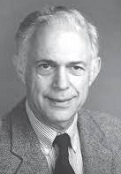
In 1967 Am. microbiologist-geneticist Allan M. Campbell (1929-2018) discovers that plasmids can carry genetic info. between bacteria, helping them resist antibiotics; in 1969 he pub. the book Episomes, one of the first comprehensive treatments of plamid biology, proposing the Campbell Model of Virus Insertion of viral DNA into a chromosome, to remain dormant until activation, pioneering the use of Extrachromosomal DNA.

In 1967 Am. geneticist George Davis Snell (1903-96) discovers that tissue compatibility is determined by specific genes, introducing the concept of H antigens and the HLA major histocompatibility complex in humans, winning the 1980 Nobel Med. Prize.

In 1968 Swiss microbiologist Werner Arber (1929-) discovers that bacteria defend themselves against viruses by producing restriction enzymes that randomly cut the virus DNA.


In 1968 Am. biochemist Walter Gilbert (1932-) and Am. molecular biologist Mark Ptashne (1940-) of the U.S. independently identify the first Repressor Proteins for genes, which prevent them from operating.
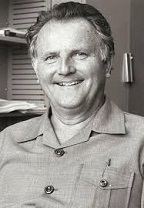
In Feb. 1969 San Diego, Calif.-born psychologist Arthur Robert Jensen (1923-2012) pub. the article How Much Can We Boost IQ and Scholastic Achievement? in the Harvard Educational Review, claiming that 80% of the variance of IQ in a pop. is the result of genetic factors, and only 20% to environmental influences, causing a firestorm of controversy along with death threats, causing him to pub. another article in 1981 with the soundbyte: "Nowhere have I 'claimed' an 'innate deficiency' of intelligence in blacks. My position on this question is clearly spelled out in my most recent book: 'The plain fact is that at present there exists no scientifically satisfactory explanation for the differences between the IQ distributions in the black and white populations. The only genuine consensus among well-informed scientists on this topic is that the cause of the difference remains an open question.'" In 1998 Jensen pub. The g Factor: The Science of Mental Ability, which claims there is a general factor of human mental ability forming a triangle of abilities, which should replace intelligence and IQ, likening it to a computer's CPU; his contention that gen. cognitive ability is an inherited trait, and that conceptual learning (synthesizing ability) occurs with greater frequency in whites than non-whites brings out the PC police; "The relationship of the g factor to a number of biological variables and its relationship to the size of the white-black differences on various cognitive tests (i.e., Spearman's hypothesis) suggests that the average white-black difference in g has a biological component. Human races are viewed not as discrete, or Platonic, categories, but rather as breeding populations that, as a result of natural selection, have come to differ statistically in the relative frequencies of many polymorphic genes. The genetic distances between various populations form a continuous variable that can be measured in terms of differences in gene frequencies. Racial populations differ in many genetic characteristics, some of which, such as brain size, have behavioral and psychometric correlates, particularly g. "

In 1969 Am. microbiologist Jonathan Roger "Jon" Beckwith (1935-) et al. of Harvard U. become the first to isolate a single gene from a bacterial chromosome, one used by a bacterium in the metabolism of sugar.
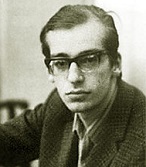
In 1969 U.S. Public Health Service virologist Robert Joseph Huebner (1914-98) pub. his Oncogene Theory, suggesting that viruses or single genes may trigger dangerous cell overgrowth, interacting with normal genes to produce cancer.
In 1969 scientists understand more about the genetics of corn than any other flowering plant?

On June 3, 1970 U. of Wisc. researchers led by 1968 Nobel Med. Prize winner Har Gobind Khorana (1922-2011) announce the first complete synthesis of a yeast gene, alanine-transfer RNA, consisting of 77 nucleotide pairs (an avg. gene contains 1K); on Nov. 12 SUNY researchers James F. Danielli, Kwang W. Jeon, and I. Joan Lorch announce the first synthesis of a living cell by dismembering amoebas and making them into new amoebas, with Danielli noting the possibility of killer viruses being unleashed if abused.



In June 1970 Am. geneticists Howard Martin Temin (1934-94) of the U. of Wisc.-Madison, and David L. Baltimore (1938-) and Renato Dulbecco (1914-2012) of MIT report the discovery of Reverse Transcriptase, an enzyme in RNA that can synthesize DNA, winning Temin and Baltimore the 1975 Nobel Med. Prize; previously it was believed that only DNA can be used to manufacture more DNA; Retroviruses, which make DNA using an RNA template become a new field of research.

In 1970 after discovering in 1956 that the Barr body of mammalian female nuclei is a condensed X chromosome, Seoul, Korea-born Japanese-Am. geneticist Susumu Ohno (1928-2000) pub. the book Evolution by Gene Duplication, proposing gene duplication as playing a major role in evolution, with duplicate genes preserved by neofunctionalization; he also suggests that the vertebrate genome is the result of one or more (usually two) genome duplications, becoming known as the 2R (Ohno's) Hypothesis, resulting in modern vertebrate genomes reflecting paleopolyploidy (whole genomes) (vs. aneuploidy for whole chromosomes), going beyond that to Ohno's Law, that the gene content of mammalian species has been conserved in the DNA content and the genes themselves, claiming that the modern mammalian X chromosome traces to a primordial X chromosome of a common ancestor; in 1972 he formalizes the concept of non-coding "junk" DNA, finding an upper limit of 30K on the number of functional loci that can be expected for a given mutation rate in mammals to avoid an excessive mutational load leading to a decline in fitness and extinction; in 1986 he proposes a relationship between DNA genetic sequences and music, translating the SARC oncogene to Chopin's "Funeral March".



In 1970 Am. microbiologist Hamilton Othanel Smith (1931-) discovers Restriction Enzymes, which can break DNA molecules in predictable places, leading Am. microbiologist Daniel Nathans (1928-99) next year to break up a cancer virus, which eventually leads to its complete genetic mapping; Smith, Nathan, and Swiss microbiologist Werner Arber (1929-) later receive the 1978 Nobel Med. Prize for their work on restrictive enzymes.

In 1971 Am. biochemist Bruce Nathan Ames (1928-) of UCB devises the Ames Test to determine the carcinogenicity (mutagenicity of DNA in the test organism) of chemicals by measuring the rate of mutation in Salmonella typhimurium bacteria.


In 1971 Japanese-born Canadian cell biologist Yoshio Masui (1931-) of the U. of Toronto and Am. developmental biologist L. Dennis Smith of Purdue U. independently discover Maturation (Mitosis) Promoting Factor (MPF), which controls when mitosis or meiosis begins in cells.

In 1972 Belgian molecular biologist Walter Fiers (1931-2019) and his team sequence the gene for bacteriophage MS2 coat protein, becoming the first sequencing of a gene, launching the Genomics Era; on Apr. 8 1976 they complete the sequencing of bacteriophage MS2 RNA.


In 1973 the first Gene Splicing is performed by Herbert W. Boyer (1936-) and Stanley Cohen (1922-) of the U.S.

In 1973 Mary-Claire King (1946-) of UCB demonstrates that human and chimpanzee DNA are 99% identical; later it is determined that 99.9% of human DNA is identical across all the world's pop.; in 2008 it is found that the DNA in identical twins is not 100% identical - science needs a woman's touch?

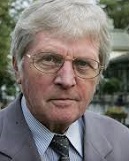
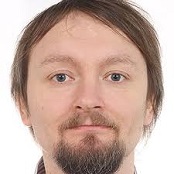
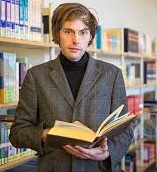
In winter 1974 Bristol-born English U. of Exeter and Ulster U. psychologist Richard Lynn (1930-) launches his career with a review titled A New Morality from Science: Beyondism in Irish Journal of Psychology, recommending that "incompetent societies have to be allowed to go to the wall" and "the foreign aid which we give to the under-developed world is a mistake, akin to keeping incompetent species like the dinosaurs which are not fit for the competitive struggle for existence", going to pub. studies claiming to find racial and gender differences in intelligence, bringing out the PC police. In 1997 he pub. Dysgenics: Genetic deterioration in modern populations, claiming guess what. In 2001 he pub. The Science of Human Diversity: A History of the Pioneer Fund. In 2001 he pub. Eugenics: A Reassessment, finding the prior work sound despite its rejection since WWII. On Mar. 1, 2002 he pub. the paper Skin Color and Intelligence in African Americans in Population and Environment, which claims that "the level of intelligence in African Americans is significantly determined by the proportion of Caucasian genes", and that "The hypothesis that discrimination by Whites is wholly or partly responsible for the low IQs obtained by Blacks and for the lower IQs obtained by dark skinned as compared with light skinned Blacks, is ... implausible." On Nov. 10, 2006 he and Finnish sociologist Tatu Vanhanen (1929-2015) pub. IQ and Global Inequality. In 2006 Lynn pub. Race Differences in Intelligence: An Evolutionary Analysis (2nd ed. in 2015), a survey of 500+ articles, giving the avg. IQ scores of East Asians as 105, Europeans 99, the Inuit (91), Southeast Asians and native Ams. (87), Pacific Islanders (85), Middle Easterners (84), East and West AFricans (67), Australian Aborigines (62), and Bushmen and Pygmies (54), attributing poor nutrition to the lower range. In 2008 Lynn pub. The Global Bell Curve: Race, IQ and Inequality Worldwide, claiming to prove that U.S. IQ differences as detailed in the 1994 book "The Bell Curve" apply globally. On Feb. 28, 2002 Lynn and Vanhanen pub. IQ and the Wealth of Nations, claiming a correlation between IQ and per capita GDP. In 2012 Lynn and Vanhanan pub. Intelligence: A Unifying Construct for the Social Sciences. In Feb. 2014 Lynn and London-born anthropologist Edward Croft Dutton (1980-) pub. the study Why is intelligence negatively associated with religiousness? in the Interdisciplinary Journal on Research and Religion, claiming that physical scientists are more intelligent than social scientists, with the soundbytes: “There is sound evidence of a negative correlation between intelligence and religiosity and between intelligence and political extremism. Therefore the most probable reason behind elite social scientists being more religious than are elite physical scientists is that social scientists are less intelligent", "Intelligence is also a factor in interdisciplinary differences in political extremism, [with] physicists, who have high IQs, being among the least extreme and lower-IQ scholars being among the most extreme", and: "[Physical] scientists are overwhelmingly atheist. This is predicted by their high IQ, which allows you to rise above emotion and see through the fallacious, emotional arguments." On Jan. 2016 and German political scientist David Becker and Scottish IQ researcher Michael Anthony Woodley of Menie, Younger (1984-) of the Tech. U. of Chemnitz, Germany pub. the article It's getting bigger all the time: Estimating the Flynn effect from secular brain mass increases in Britain and Germany in the journal Learning and Individual Differences, citing data from brains in the U.K. and Germany over the last 80 years to show that the Flynn effect of increasing generational IQ is accompanied by increased brain size, attributing 6%-13% to its contribution. On May 3, 2018 Lynn and Dutton pub. Race Differences in Psychopathic Personality: An Evolutionary Analysis, with the ad blurb: "This paper proposes that there are racial and ethnic differences in psychopathic personality conceptualised as a continuously distributed trait, such that high values of the trait are present in blacks and Native Americans, intermediate values in Hispanics, lower values in whites and the lowest values in East Asians. Part one of the paper sets out the evidence for this thesis. Part two applies the thesis to the unresolved problem in The Bell Curve that racial and ethnic differences in a number of social phenomena such as crime, welfare dependency, rates of marriage, etc. cannot be fully explained by differences in intelligence and proposes that some of the residual disparities are attributable to differences in psychopathic personality." In Apr. 2019 Lynn and Becker pub. The Intelligence of Nations, culminating their research efforts.
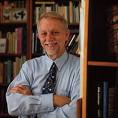


In 1974 Am. psychobiologist Gary K. Beauchamp (1943-), Canadian biologist Kunio Yamazaki (-2013), and British-born Am. physician-biologist Edward A. Boyse (1923-2007) discover that mice can distinguish other mice that have the same genes for the Major Histocompatibility Complex, the part of the immune system that distinguishes between self and nonself; later it is traced to the sense of smell; Beauchamp determines that cats (order Panthera) have no preference for sugars because their sweet taste receptors are non-functional.

In 1975 German-born molecular biologist Gunter (Günter) Blobel (1936-2018) of Rockefeller U. discovers Protein Targeting (Sorting), the mechanism to carry newly-made proteins through cells to their proper locations via signal peptide address tags, winning him the 1999 Nobel Med. Prize.



In 1975 Argentine biochemist Cesar Milstein (1927-2002) and his German-born student Georges Jean Franz Kohler (Köhler) (1946-95), and English-born Danish immunologist Niels Kaj Jerne (1911-94) of Cambridge U. discover the hybridoma technique for making Monoclonal Antibodies by injecting a mouse with a target protein and harvesting antibodies from its spleen, becoming the first breakthrough toward a "magic bullet" to target disease, winning them the 1984 Nobel Med. Prize.
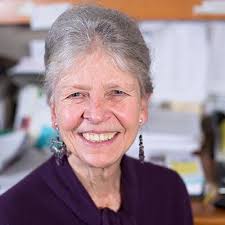
In 1975 Yale U. biochemist Joan Elaine Argetsinger Steitz (1941-) pub. her discovery that ribosomes use complementary base pairing to identify the start site on mRNA; in Nov. 1979 she and Am. dermatologist Michael Rush Lerner pub. their discovery of SnRNP (pr. like snurps) in Proceedings of the Nat. Academy of Sciences, 150 nucleotide-long RNA segments associated with a protein which splice introns out of newly transcribed pre-mRNA components of spliceosomes) in eukaryotes after ribosomes interact with messenger RNA by complementary base pairing; she later discovers the snoRNP, proving that introns are not junk DNA but are used in alternative RNA splicing and, and explaining why humans have only double the number of genes of a fruit fly, with the soundbyte: "The reason we can get away with so few genes is that when you have these bits of nonsense, you can splice them out in different ways. Sometimes you can get rid of things and add things because of this splicing process so that each gene has slightly different protein products that can do slightly different things. So it multiplies up the information content in each of our genes."
'

In Jan. 1976 in San Francisco, Calif. MIT-trained chemist and venture capitalist Robert A. "Bob" Swanson (1947-99) and molecular biologist Herbert Wayne "Herb" Boyer (b. 1936) found Genentech over a beer, putting up $500 each to found a future $50B co., whose first product is the brain protein somatostatin; in 1977 Boyer et al. describe the first-ever synthesis and expression of a peptide-coding gene; in Aug. 1978 Genentech produces synthetic insulin using transgenic genetically modified bacteria built from individual nucleotides, which wins out over Biogen's approach of using whole genes from natural sources; in 1979 they produce human growth hormone; in 1982 the U.S. FDA approves humulin, the first genetically engineered human insulin.

In 1976 Czech.-born Am. scientist Martin Frank Gellert (1929-) et al. of the Nat. Insts. of Health discover the enzyme Gyrase that allows double-helix DNA to form supercoils by unwinding it first.

In 1976 Japanese scientist Susumu Tonegawa (1939-) discovers that genes that produce antibodies move close together on a chromosome, recombine, and split into segments as needed to allow the immune system to adapt and produce millions of antibodies, winning him the 1987 Nobel Med. Prize.


In 1976 Am. scientists Harold Elliot Varmus (1939-) and John Michael Bishop (1936-) discover Oncogenes, genes in normal cells that can mutate and cause cancer.


In 1977 a team led by English molecular biologist Frederick Sanger (1918-2013) and his student Allan Maxam (1942-) of Harvard U. determine the exact DNA sequence of bacteriophage phi-X174, the first for any organism, using the Maxam-Gilbert Sequencing Method that combines chemicals that cut DNA at specific bases with radioactive labeling and polyacrylamide gel electrophoresis, becoming the first DNA sequencing, becoming a breakthrough in molecular biology; Am. biochemist Walter Gilbert (1932-) independently develops a nucleotide sequencing technique, and Sanger and Gilbert share the 1980 Nobel Chem. Prize.


In 1977 Falmouth, Ky.-born molecular biologist Philip Allen Sharp (1944-) of MIT and Derby, England-born molecular biologist Sir Richard John Roberts (1943-) of Cold Spring Harbor Laboratory on Long Island independently discover Alternative (Differential) RNA Splicing that permits a single gene to code for multiple proteins, along with Split (Interrupted) Genes, genomic sequences (exons) interrupted by intervening sequences of meaningless info. (introns), found in organisms other than monerans (bacteria and algae), going on to share the 1993 Nobel Med. Prize.

In spring 1978 Peter H. Seeburg (1944-) et al. of the Univ. of Calif. identify the DNA for Human Growth Hormone (HGH), for which the U. of Calif. files a patent; in Nov. Seeburg quits the U. of Calif. and goes to work for Genentech Corp., where a crash program is in progress to create a growth hormone drug, taking a sample of the DNA that the U. of Calif. is trying to patent on Dec. 31 and stashing it; meanwhile on May 23, 1977 Genentech discovers a way to trick E. coli bacteria into producing synthetic human insulin by inserting the human gene into it, and they go into production in a joint effort with the City of Hope Medical Center in Duarte, Calif., producing the first batch in 1979 and founding the biotech industry after the U.S. FDA approves its use in 1982.

In 1979 German-born British geneticist Sir Walter Bodmer (1936-) (knighted in 1986) founds Human Leukocyte Antigen (HLA) research to study the heredity of large human families and locate gene markers for specific traits.

In 1979 MIT biologist Alexander Rich (1924-2015) grows a crystal of Z-DNA, a transient state of DNA associated with DNA transcription in which the helix winds to the left in a zigzag pattern; the other forms are A-DNA and B-DNA; in 2005 Rich crystallizes the junction box of B-DNA and Z-DNA.

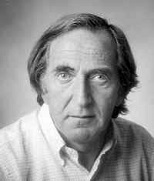

On Apr. 17, 1980 Am. molecular biologists W. Ford Doolittle (1941-) and Carmen Sapienza pub. the article Selfish genes, the phenotype paradigm and genome evolution in Nature, explaining why the majority of non-coding "junk" DNA in large genomes finds its origin in the selfish amplification of transposable elements, with the soundbyte: "When a given DNA, or class of DNAs, of unproven phenotypic function can be shown to have evolved a strategy (such as transposition) which ensures its genomic survival, then no other explanation for its existence is necessary"; in the same issue English chemist Leslie Eleazer Orgel (1927-2007) and English molecular biologist Francis Harry Compton Crick (1916-2004) pub. the article Selfish DNA: The Ultimate Parasite, with the soundbyte that junk DNA has "little specificity and conveys little or no selective advantage to the organism".



In Apr. 1980 Am. biologist David Botstein (1942-), Am. biochemist Ronald Wayne "Ron" Davis (1941-), and Am. scientist Mark Henry Skolnick (1946-) propose DNA Sequencing to develop gene markers for genetic diseases based on a Genetic linkage map using restriction fragment length polymorphisms, leading to the Human Genome Project.
On June 16, 1980 the U.S. Supreme (Burger) Court rules 5-4 in Diamond v. Chakrabarty that microbes created by genetic engineering can be patented - arrest that crotch?
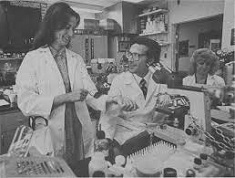
In 1980 Am. geneticists Martin J. Cline (1934-) and Winston A. Salser of UCLA successfully transfer working genes from one mouse to another, creating the first transgenetic organism, leading to the ability to make molecular genetic alterations in cancer esp. leukema and founding the medical field of Gene therapy (human gene transfer); too bad, he transfers rDNA into the bone marrow cells of two patients with hereditary blood disorders in violation of Nat. Inst. of Health guidelines and sans univ. approval, forcing him to resign his dept. chairmanship; Salser joins William Bowes of Cetus Corp. to found Applied Molecular Genetics (Amgen)in Thousand Oaks, Calif. to produce Epogen, the first recombinant human erythropoetin product for the treatment of anemia associated with chronic kidney failure, becoming the first successful biotech co.
In 1980 U.S. geneticists discover Hypervariable Regions in Genes, short DNA sequences that repeat in the same chromosome.
In 1981 the genes for poliomyelitis and influenza A virus are sequenced.
In 1981 scientists at Ohio U. in Athens become the first to transfer genes from one animal species to another, transferring the gene for rat growth hormone to mice embryos, causing some to grow to double size.

In 1981 Elizabeth Helen Blackburn (1948-), Jack William Szostak (1952-), and Carolyn Widney "Carol" Greider (1961-) of the U.S. begin research on DNA; in 1982 Blackburn and Szostak discover Telomeres; 1984 Greider and Blackburn discover their role in aging and the role of the enzyme telomerase in protecting them from progressive shortening, winning them the 2009 Nobel Med. Prize.

In 1981 English scientist Sir Martin John Evans (1941-) discovers how to culture embronic stem cells, becoming the father of stem cell research.


In 1981 Am. microbiologists Charles Gald Sibley (1917-98) and Jon Edward Ahlquist (1944-) of Yale U. use DNA to revise the evolutionary relationships between flightless birds incl. the ostrich and emu. In 1984 they find that gene sequences from humans and chimps react more strongly together than those from gorillas and chimps, and conclude that they diverged about 5M-6M years ago; later studies on gene sequences find a 1.6% human-chimp difference and a 2.1% gorilla-chimp difference; "More and more people are beginning to believe that chimpanzees and human beings are on one side of a great gulf, while the other apes are on the other side" (Isaac Asimov) - well throw clods out of my butt?

In 1982 Am. chemist Thomas Robert Cech (1947-) discovers that RNA can act as a catalyst and participate in cellular reactions, incl. on ribosomes; in 1984 Sidney Altman (1939-) independently discovers Catalytic RNA, winning them the 1989 Nobel Chem. Prize.
In 1982 Eli Lilly and Co. obtains FDA approval to market Humulin synthetic human insulin produced by Escherichia coli bacteria (developed by Genentech in 1978), becoming the first commercial genetic engineering product, and causing Recombinant DNA (rDNA) to go bigtime, causing a race to create new products, incl. Human Growth Hormone (HGH), Tumor Necrosis Factor (TNF), and Tissue Plasminogen Activator (TPA); the first genetically-engineered crop plant is developed, a tomato.
In 1982 T-10, the Theoretical Biology and Biophysics Group at Los Alamos Nat. Lab, led by Walter Goad (1925-2000) founds GenBank, a public genetic sequence database later used by the Human Genome Project.



In May 1983 a team led by Luc Montagnier (1932-) of the Pasteur Inst. in France isolates the HIV-1 (human immunodeficiency) virus; Robert Charles Gallo (1937-) of the U.S. determines that it causes AIDS after Myron Elmer "Max" Essex (1939-) becomes the first to link animal and human retroviruses to immunosuppresive disease and determine that HIV can be transmitted via blood and blood products, identifying the virus surface protein gp120 next year that is later used for blood screening; next Jan. 21 Montagnier pub. the genetic code of HIV-1, and next year Gallo develops a blood test for the virus that causes AIDS, which he calls HTLV-2,then on June 13, 1984 he pub. the genetic code for HTLV-3 (human T-cell leukemia virus type 3); next Aug. 6 the Centers for Disease Control report infecting chimpanzees with HIV, a key step toward developing a vaccine; they call HIV-1 lymphadenopathy-associated virus (LAV) until 1987 when HIV-2 is discovered by the same team; Montagnier wins the 2008 Nobel Med. Prize.
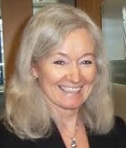
In 1983 Stourbridge-born Dame Kay Elizabeth Davies (nee Partridge) (1951-) of Oxford U. discovers a gene marker for Duchenne Muscular Dystrophy, leading to a test for screening fetuses.
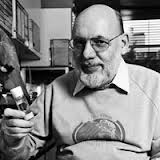
In 1983 Walter Jakob Gehring (1939-) et al. of the U. of Basel discover the Homeobox DNA sequence in genes in vertebrates and arthropods, which directs segmentation.
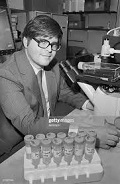
In 1983 Canadian geneticist James Francis Gusella (1952-) discovers a gene marker for Huntington's Disease.

In 1983 Lenoir, N.C.-born biochemist Kary Banks Mullis (1944-2019) discovers DNA Amplification, splitting the DNA in a single cell into two strands then starting a Polymerase Chain Reaction (PCR) that creates millions of identical pieces, becoming a breakthrough for genetic research, "virtually dividing biology into two epochs" (New York Times) and winning him a share of the 1993 Nobel Chem. Prize; he goes on to oppose the use of PCR to detect HIV along with Peter Duesberg that began in 1989.
In 1983 Jack William Szostak (1952-) of Mass. Gen. Hospital and Andrew W. Murray of Harvard U. create the Yeast Artificial Chromosome (YAC), the first artificial chromosome.

On Sept. 15, 1984 British geneticist Sir Alec John Jeffreys (1950-) of the U. of Leicester et al. announce that DNA sequencing is unique, and can be used for DNA Fingerprinting (Typing) (Profiling) (Gel Electrophoresis); it becomes commercially available in 1987 after the discovery of the Polymerase Chain Reaction (PCR).



In 1984 Italian-born Am. scientist Mario Ramberg Capecchi (1937-), who started out as a feral child in WWII Italy and ended up a student of James D. Watson invents Homologous Recombination, allowing transgenic DNA to be injected into mammalian DNA to change its genetic makeup, going on to develop the first knockout mice with targeted mutations in 1989, winning the 2007 Nobel Med. Prize along with Italian-born scientist Oliver Smithies (1925-2017) and British biologist Sir Martin John Evans (1941-), who independently discover the technique.
In May 1985 Robert Sinsheimer of the U. of Calif. at Santa Cruz proposes mapping all the genes in a human being, leading to the Human Genome Project.
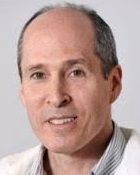
In 1986 Am. molecular biologist Jeremy Nathans (1958-) et al. isolate the opsin genes for human color vision and color blindness.
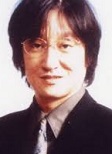
In 1987 CRISPR (Clustered Regularly Interspersed Short Palindromic Repeats) is independently discovered by Osaka U. molecular biologist Yoshizumi Ishino (1959-) et al., plus other researchers in Spain and Netherlands, becoming a hot gene editing tool.
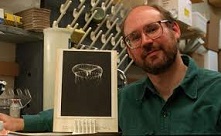
In 1987 Am. molecular biologist Douglas C. Prasher (1951-) proposes the use of Green Fluorescent Protein from jellyfish to report when a protein is being made in a cell; after his work wins his colleagues the 2008 Nobel Chem. Prize while he is snubbed, he is found working for $10 an hour as a shuttle operator in Huntsville, Ala., saying he lost his job at NASA and couldn't get another one in science, returning to scientific research work in June 2010.
In 1987 scientists at the U. of Calif. conclude from DNA studies that all modern humans trace their ancestry to one African female who lived 100K-200K years ago, whom they name Mitochrondrial Eve - she was what color?
On Apr. 12, 1988 the U.S. Patent and Trademark Office issues a patent to Harvard U. for a genetically-engineered mouse called the Harvard Mouse (OncoMouse), becoming the first granted for an animal life form - if an animal has a baby, does it have to pay Harvard royalties?
In May 1989 the first successful nuclear gene transfer in humans is performed after approval by the Nat. Insts. of Health.

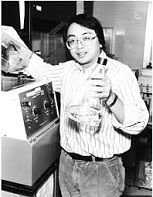
In 1989 the human gene that encodes the CFTR (Cystic fibrosis transmembrane conductance regulator) protein is sequenced by Am. geneticist Francis Sellers Collins (1950-) and Chinese-born Canadian geneticist Lap-Chee Tsui (1950-); defects cause cystic fibrosis.

In Sept. 1990 Tulsa, Okla.-born physician William French Anderson (1936-) successfully injects healthy genes into 4-.y.-o. Ashanti DeSilva, who suffers from Bubble Boy Disease (severe immunodeficiency), becoming the father of the field of Gene Therapy (Human Gene Transfer); too bad, on July 19, 2006 he is convicted of repeatedly molesting a colleague's 10-y.-o. daughter who took martial arts classes at his home, and sentenced to 14 years in prison, then released on May 17, 2018 - blue jean therapy?
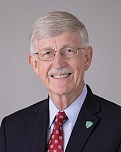
In Oct. 1990 the Human Genome Project begins, led by Dr. Francis Sellers Collins (1950-) (a theist).
In 1991 the Human Genome Diversity Project, a sister to the Human Genome Project to look for genetic differences among world pops. and find how the DNA sequence in the human genome varies from one pop. to another is proposed by pop. geneticists, but runs into political opposition from those accusing it of racism, and others accusing it of being a "vampire project" for extracting medical info. from endangered tribes without paying them; it pub. its first major analysis in 2002.
In 1992 the first complete DNA sequence of #6 of 16 chromosomes in a yeast is determined scientifically.



In 1994 New York City-born psychologist Richard Julius Herrnstein (1930-94) and Newton, Iowa-born political scientist Charles Alan Murray (1943-) pub. the bestseller The Bell Curve: Intelligence and Class Structure in American Life, which pisses-off the PC police with the statement: "It seems highly likely to us that both genes and the environment have something to do with racial differences" (ch. 13), after which 52 scientists sign Mainstream Science on Intelligence, an editorial by San Francisco, Calif.-born psychologist Linda Susanne Gottfredson (1947-) pub. on Dec. 13 in the Wall Street Journal backing the book up and dissing affirmative action, hiring quotas, and race-norming on aptitude tests; duh, ch. 13 starts out: "The debate about whether and how much genes and environment have to do with ethnic differences remains unresolved."
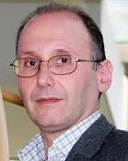
In 1994 English scientist Sir Michael Rudolf Stratton (1957-) and Richard Wooster at the King Lab at UCB discover BRC1, the first breast cancer repair (tumor suppressor or caretaker) gene, and clone it in 1994, also discovering the unrelated caretaker gene BRCA2.

In 1994 Japanese-born Am. neurobiologist Clockahashi, er, Joseph Takahashi (1951-) discovers the genetic basis for the mammalian circadian clock, and in 1997 identifies the Tiktok, er, Clock gene.
In 1995 the first complete genome sequence of a living microorganism is described, the bacterium Haemophilus influenzae.

In Jan. 1996 British psychologist Christopher Richard "Chris" Brand (1943-2017) pub. The g Factor: General Intelligence and Its Implications, claiming that intelligence is heritable, immediately bringing the PC police (Anti-Nazi League) on it, causing the publisher John Wiley & Sons to withdraw it on Apr. 17 without explanation, although everybody knew why; "It is a very different book from the Bell Curve... Brand's book traverses every step of the chain of logic needed to see IQ as critical for social and educational policy: that there is something measurable called general intelligence ('g'), that differences in 'g' are strongly influenced by genetic factors (although Brand allows for environmental factors, he estimates that about 45 per cent of the variation in intelligence is due to 'narrow' genetic factors), and that 'g' is an accurate predictor of success in life. Along that chain there are far too many shaky steps for his thesis to be acceptable to many scientists, whether it is in the way IQ heritability is measured or the very debatable link between IQ and success." (New Scientist)
In Sept. 1996 L.S. Liebovitch, Y. Tao, A.T. Todorov, and L. Levine pub. the article Is there an error correcting code in the base sequence in DNA?, failing to find any.
In 1996 DNA overstretching, in which the double helix structure suddenly extends by 70% when subjected to just 65 picoNewtons of force is discovered.
In 1996 the brewers' yeast Saccharomyces cerevisiae becomes the first eukaryote genome to be sequenced.

Didn't the dolly llama beat them to it by 645 years (1351)? On Feb. 22, 1997 English embryologist Sir Ian Wilmut (1944-) et al. of the Roslin Inst. at the U. of Edinburgh in Scotland announce the cloning of an adult mammal, a Finn Dorset lamb named Dolly the Sheep (1996-2003) last July 5, becoming the first mammal to be cloned, named after Nashville singer Dolly Parton because it was cloned from a cell from an adult ewe's mammary gland (really named after singer Dolly Parton for her bodacious tatas?); it later is put down after a short life marred by premature aging and disease, and when Wilmut reveals that the success rate is 1 in 40 tries, skeptics point out that the whole thing could be a false result; meanwhile on Aug. 7 a Wisc. cattle breeder announces the cloning of a calf in Feb. from stem cells removed from a cow fetus; meanwhile Wilmut also clones two ewes named Polly and Molly the Sheep (1997-) from a fetal cell that has the human blood clotting factor IX inserted; meanwhile researchers at the Univ. of Bath in England create headless tadpoles, adding to the controversy and stirring fears of coming organ factories - I reckon you ain't from these parts?

On July 11, 1997 Cell mag. pub. a study by Swedish-born geneticist Svante Paabo (Pääbo) (1955-) et al. of the U. of Munich, reporting that DNA tests on a Neanderthal skeleton reveal a genetic makeup quite different from Homo sapiens, suggesting no interbreeding and an earlier evolutionary split than suspected.
In 1997 Antisense Oligodeoxynucleotide Therapy is developed to use antisense oligonucleotides (ASOs) to target mRNA and alter its expressions through a variety of mechanisms.
On Nov. 5, 1998 James A. Thomson of the U. of Wisc. announces the isolation of the first embryonic human stem cells; five days later a team led by John D. Gearhart at Johns Hopkins U. follows suit; they are believed to have potential for treating incurable diseases such as Parkinson's; in July R.G. Young, D.L. Butler et al. pub. an article in Journal of Orthopedic Research, announcing the use of stem cells for Achilles tendon repair.


In 1998 Am. molecular biologists Andrew Zachary Fire (1959-) and Craig Cameron Mello (1960-) of the Carnegie Inst. discover that RNA can switch off genes in what is termed RNA interference (RNAi), winning them the 2006 Nobel Med. Prize after just eight years; in 2010 John DeVincenzo et al. of the U. of Tenn use it for the first time combat a human disease, the respiratory syncytial virus (RSV). James Alexander "Jamie" Thomson (1959-) et al. of the U. of Wisc. pluck stem cells from human embryos, destroying the embroys in the process and touching off a divisive sociopolitical debate; stem cells can turn into any of the 220 body cell types.
In 1998 the genome for the 1mm transparent nematode Caenorhabditis elegans is sequenced, becoming the first for a multicellular eukaryote.
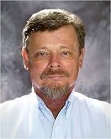
In Mar. 1999 after the Behavior Genetics Assoc. gets pissed-off in 1995 by his resignation address as pres. (since 1994) calling for an investigation into genetic factors behind the high incidence of black crime in the U.S., and he authors the foreword for white nat. politician David Duke's autobio. "My Awakening", calling him "a Moses-like prophet" and slamming the NAACP as a front org. for Jewish white race-haters, Mont.-born Fla. State U. psychologist and behavioral geneticist Glayde D. Whitney (1939-2002) gives an interview to Chris Colin, uttering the soundbyte: "Races are different for many genetic systems that influence everything from behavior and psychology to physiology, medicine and sports... Screaming nasty words does not change the reality", pissing-off the PC police and causing faculty and students of FSU to call for his resignation, and the Fla. Senate to pass Resolution 2742 "condemning the racism and bigotry"; despite the pressure, his univ. protects his academic freedom and doesn't fire him.


On June 26, 2000 (Mon.) at the White House Francis Sellers Collins (1950-), dir. of the Human Genome Project, and John Craig Venter (1946-), pres. of Celera Genomics Corp announce their separate First Drafts of the Human Genome, the epoch-making first sequencing (deciphering) of 95%-97% of the human genome, expected to revolutionize medicine, just in time for the 50th anniv. of the pub. of the double helix work by James D. Watson and Francis Crick, taking only 13 of 15 expected years, declaring that the human genome has 3.1B "letters" (chemical bases); Pres. Clinton calls it "the most wondrous map ever produced", comparing the HGP to the Manhattan and Apollo projects; the program has come in underbudget, and involved 1.6K scientists, and adding the religious soundbyte: "Today, we are learning the language in which God created life. We are gaining ever more awe for the complexity, the beauty and the wonder of God's most divine and sacred gift" after being put up to it be Collins, a theist; Collins and Venter continue their war to be the first to finish the sequencing; by the end of the decade a genome can be sequenced in a week; meanwhile insurance cos. and govt. agencies line up to find ways to get and use genetic makeups, while every Tom, Dick and Harry with a computer rushes to patent genes after roping them off like in the Okla. Land Rush?
In 2000 the full genome sequence of Drosophila melanogaster is completed; it contains four pairs of chromosomes, incl. a sex-determining X/Y pair, and three autosomes labeled 2, 3, and 4, and has 139.5M base pairs with 15,682 genes, with 60% being functional non-protein-coding DNA involved in gene expression and control.
In 2000 low-cost (less than $100) DNA testing kits become available to the consumer from Family Tree DNA, causing a fad to discover family ancestry and distant family members; by 2019 the DNA testing cos. have 26M DNA profiles available, half from the U.S.
On Jan. 11, 2001 researchers in Ore. announce the first genetically altered primate, a rhesus monkey named ANDi, having a jellyfish gene for fluorescence spliced into its DNA - it glows in the dark?
On Jan. 26, 2001 scientists announce that they have decoded the Rice Genome, which becomes the first major crop plant to have its genome decoded.
In 2001 the Human Genome Project and Celera Genomics simultaneously release the first draft sequences of the human genome.
In July 2002 scientists at SUNY build a polio virus in the lab using public gene databases, becoming the first known infectious agent manufactured in a lab from scratch.

In Aug. 2002 Swedish biologist Svante Paabo (Pääbo) (1955-) pub. the discovery of the FOXP2 "language gene".
In 2002 the Human Genome Project pub. its first major analysis of blood samples from 52 world pops. converted into 1K cell lines, showing that the subjects' genomes fall into five major clusters corresponding to their continent of origin and therefore their race, and that all coalesce to a single root ancestral pop. that began to migrate from NE Africa 50K years ago.
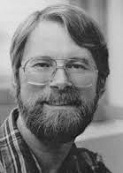
We're all brothers and sisters so why can't we just get along? In 2002 geneticist Alan R. Templeton of Washington U. in St. Louis pub. the article Out of Africa again and again, claiming that there were at least two major expansions after the original range extension of Homo erectus out of Africa 1.7M years ago, and that after cranial capacities increased 500K years ago, African and Eurasian pops. were linked by recurrent gene flow combined with occasional major movements out of Africa and Asia that enhanced gene interchange via interbreeding, or in other words, white supremacists are full of it because "The current spatial and frequency heterogeneity of an 'archaic' type by a 'modern' type... is consistent with a trait-based evolution of humans that is allowed under expansion with interbreeding", with the killer conclusion: "The predicted large genetic impact of African populations explains ... that about 90% of the haplotype trees in the nuclear genome appear to be rooted in Africa. These results also falsify a total replacement hypothesis, which predicts that all haplotype trees with coalescent times greater than 100,000 years must be rooted in Africa. All of the haplotype trees considered have expected coalescent times greater than 100,000 years, so 100% of such old trees should have African roots under complete replacement, and not the observed 90%"; "Humans expanded again and again out of Africa, but these expansions resulted in interbreeding, not replacement, and thereby strengthened the genetic ties between human populations throughout the world."
On Mar. 28, 2003 Bernard La Scola, Didier Raoult et al. of the U. of the Mediterranean in Marseille pub. an article in Science reporting the discovery of Mimivirus (microbe mimicking virus), with 1.18M bases containing 900+ genes, the size of a small bacterium, overturning the belief that a virus is a simple inert particle and throwing the classification system into a tizzy until?
In Sept. 2003 the Encyclopedia of DNA Elements (ENCODE) public research project is launched by the U.S. Nat. Human Genome Research Inst. (NHGRI) as a follow-up to the Human Genome Project, with the aim of identifying functional elements in the human genome; in June 2007 Phase 1 results are pub. in Nature; on Sept. 5, 2012 Phase 2 results are pub. in 30 papers, with the conclusion that 80% of human DNA has a "biochemical function", meaning that it can be transcribed, which critics consider overbroad; on Nov. 4, 2014 Gerton Lunter et al. of the U. of Oxvord pub. a study that finds that only 8.2% of human DNA is functional; on Juy 18, 2017 Dan Graur of the U. of Houston pub. a study that calculates that 75%-90% of the human genome is junk DNA, which is necessary to prevent deleterious mutations from undermining the species.

In 2003 Swedish psychiatrist Lars Christopher Gillberg (1950-) et al. identify the genetic mutations in individuals with autism, two genes on the X chromosome.
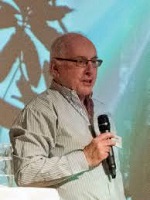
In 2003 Canadian biologist Paul David Neil Hebert (1947-) adapts a technique invented by Carl Woese et al. in the 1980s for arthropods and introduces DNA Barcoding, which standardizes molecular species indentification to tell species apart by using a very short gene sequence from a standardized position in the genome, and proposes Cytochrome Oxidase 1 (CO1) as the barcode for animals; in 2007 the Barcode of Life Initiative is launched; in 2009 the Barcode of Life Data System (BOLD) is founded as an internat. molecular species identification reference library; in 2009 the Consortium for the Barcode of LIfe Project (CBoL) Plant Working Group proposes rbCL and matK as the duel barcode for land plants; in 2011 the Fungal Barcoding Consortium proposes the Internal Transcribed Spacer Region (ITS) as the barcode for fungi.
In 2003 the sequencing of the human genome is finished by the Human Genome Project, with 99% of the genome sequenced with 99.99% accuracy.
In 2003 the recombinant adenovirus Gendicine by Shenzhen SiBiono Gene Tech becomes the first gene therapy product approved for clinical use on humans, delivering unmutated p53 genes.
In 2003 the first human clone is planned by Prof. Panos Zavos of the U.S. and Dr. Severino Antinori of Italy.
In 2003 David C. Page et al. of Cambridge U. discover that Y chromosomes contain palindromes; in 2009 the palindrome system is discovered to have a simple weakness that explains sex anomalies incl. feminization and sex reversal - Madam, I'm Adam
In 2004 scientists drop their estimate of the number of genes in the human genome from 30K-40K to 20K-25K; in contrast, Arabidopsis, a plant in the mustard family has about 27K, a fruit fly 13.6K, rice 45K, and maize 50K.
In 2004 Merck introduces a vaccine for Human Papillomavirus (HPV), effective for HPV 16 and HPV 18, which cause 70% of cervical cancers by inactivating tumor suppressor genes.
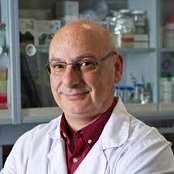
On Feb. 1, 2005 after 18 mo. of rejections by four journals, Spanish microbiologist Francisco Juan Martinez Mojica (1963-) et al. pub. the article Intervening sequences of regularly spaced prokaryotic repeats derive from foreign genetic elements in Journal of Molecular Evolution, reporting their discovery that some CRISPR spacers are derived from phage DNA and extrachromosomal DNA incl. plasmids, indicating that they are fragments of DNA gathered from viruses that tried to attack the cells, indicating that they might have a role in adaptive immunity in bacteria.
In June 2005 scientists at St. Thomas' Hospital in London release a study showing that 34% of the difficulty women face in reaching orgasm during intercourse is due to genes - wearing them too tight?
On Dec. 8, 2005 researchers at Harvard and MIT announce in Nature mag. the first complete deciphering of the genetic code of a dog, a boxer named Tasha; "Outside of a dog, a book is man's best friend. Inside of a dog, it's too dark to read. We're here to unveil the book of the dog", says Dr. Francis Collins, dir. of the Nat. Human Genome Research Inst.; in 2003 the DNA (2.4B chemical building blocks) of a male poodle named Shadow was partially decoded.

In 2005 German-born British human geneticist Sir Walter Bodmer (1936-) is appointed to lead a £2.3M program at Oxford U. to study the genetic makeup of the U.K.
In Mar. 2006 the Am. Journal of Human Genetics pub. a study on Ashkenazi Jews, indicating a Hebrew origin for them, not Khazars as proposed by Arthur Koestler.
On May 7, 2006 Nature Genetics pub. an article announcing a new genetic marker which signals a 60% increased risk of prostate cancer in men, and which is twice as common in blacks than whites.
In Sept. 2006 after Microsoft co-founder Paul Allen invests $100M to develop it, the Allen Brain Atlas, a 3-D map of the 21K genes in the mouse brain goes public.
In 2006 Swedish biologist Svante Paabo (Pääbo) (1955-) announces a plan to reconstruct the entire genome of the Neanderthals.

In 2006 Japanese scientist Shinya Yamanaka (1962-) of Kyoto U. in Japan creates the first Induced Pluripotent (iPS) Cells, that can develop into any cell type; too bad, less then 1% of adult cells can be reprogrammed into iPS cells until a new technique is found in Aug. 2009 that involves silencing the p53 pathway that prevents mutations and preserves the genome sequence.
On Jan. 1, 2007 Nature Biotechnology reports that scientists have "knocked out" the genes responsible for making prions, making cows potentially immune from mad cow disease.
On Jan. 14, 2007 an article in the journal Nature Genetics claims that the gene SORL1 can raise the risk of developing the most common form of Alzheimer's disease.
In Jan. 2007 scientists at the Nat. Microbiology Lab in Winnipeg, Man., Canada reconstruct the 1918-19 Spanish flu virus from the exhumed body of a victim buried in Alaskan permafrost - how was I to know she was with the Russians too?
In Feb. 2007 Takashi Tsuji et al. of Tokyo U. announce in Nature Methods that they have found a way to regrow teeth in mice using embryonic stem cells.
On Apr. 13, 2007 Science mag. pub. news of the sequencing of the genome of the Rhesus macaque Old World monkey, becoming the 3rd primate to be sequenced.
On May 28, 2007 ViaLactia of Australia announces Marge the Cow, the first cow with a genetic mutation to produce low-fat milk.
In May 2007 Watson & Crick survivor James Dewey Watson (1928-) becomes the first person to receive his own personal genome map; too bad, on Oct. 14 an article in the Sunday Times Mag. contains some comments that piss-off the PC police, saying that he is "inherently gloomy about the prospect of Africa", because "All our social policies are based on the fact that their intelligence is the same as ours, whereas all the testing says not really", and "There is no firm reason to anticipate that the intellectual capacities of peoples geographically separated in their evolution should prove to have evolved identically. Our wanting to reserve equal powers of reason as some universal heritage of humanity will not be enough to make it so", causing him to be fired from Cold Spring Harbor Lab on Oct. 18, and after tries to retract and apologize don't work, he resigns on Oct. 25, after which the Sunday Times pub. a cheap shot article claiming that 16% of his DNA is of African origin, using a flawed version of his genome map.
On June 28, 2007 J. Craig Venter et al. announce the first species conversion, the conversion of one species of bacterium into another by replacing its DNA; "This is the equivalent of changing a Macintosh computer to a PC by inserting a new piece of software" (Venter); their next goal is to create a simple creature that has never existed before.
In 2007 "the Berlin Patient" Timothy Ray Brown (1966-) becomes the first person to be cured of HIV/AIDS via a hematopoietic stem cell transplantation; his cure is announced at the 2008 Conference on Retroviruses and Opportunistic Infections; he remains anonymous until 2010; in 2019 "the London Patient" Adam Castillejo becomes the 2nd person cured.
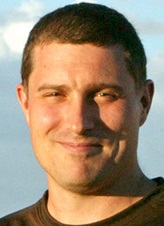
In 2007 U. of Ariz. microbiologist Michael Worobey traces the evolutionary origins by HIV, finding HIV infections occurring in the U.S. as far back as the 1960s; in 2019 Worobey extracts HIV virus from a human from the early 20th cent.
On Jan. 31, 2008 British scientists announce the creation of sperm cells from a human female embroyo, opening up the possibility of lesbian couples having children.
On June 16, 2008 a Swedish study of 90 adults pub. in the Proceedings of the Nat. Academy of Sciences Journal finds that gay men and hetero women have brain halves of similar size, while lezzies and straight men have bigger right sides, lending evidence to sexual orientation being genetically determined or influenced - or proof that the once perfect 100% straight human race is degenerating through God's judgment on sin?
On Sept. 5, 2008 three studies are pub. in Science and Nature, showing how the cascade of genetic changes that turn brain and pancreas cells cancerous proceed along the same 12 core pathways.
In Nov. 2008 scientists announce that they have mapped all of the genes of a person with cancer, incl. normal and cancerous cells.
In 2008 Introgen of Houston, Tex. develops Advexin, the first gene therapy for cancer and Li-Fraumeni syndrome, using a form of Adenoirus (common cold) to carry a replacement gene coding for the p53 protein; too bad, the FDA doesn't approve it.
On Apr. 14, 2009 the United Arab Emirates claims the world's first cloned camel, the Arab version of Dolly the Sheep, a 1-humped female called Injaz born on Apr. 8 after five years of work.
On May 21, 2009 Science Daily reports reports that so-called "junk DNA" isn't junk but performs vital functions, using genes called transposons to regroup the DNA at key phases in the lifecycle.
On May 22, 2009 PLoS Genetics announces that HIF-1 (hypoxia-inducible factor 1), which helps an organism survive by turning on when oxygen levels are low plays a role in human cancer, explaining why dietary restriction lengthens lifespan.

On May 27, 2009 in an article in Nature, scientists in Japan led by Erika Sasaki announce the creation of the first genetically-modified "transgenic" monkeys that can pass their new genetic attributes to their offspring, producing baby marmosets Kei and Kou, whose skin glows green under UV light, causing concerns to be raised of it being used on humans - the answer to race, make everybody into pastel glow in the dark colors?
On June 9, 2009 the journal Genetic announces pub. a breakthrough by a team of scientists in Germany, Russia, and Sweden of locating the set of genetic regions responsible for animal tameness.
In June 2009 students at Cambridge U. create the seven E. chromi strains of Escherichia colia, one in each color of the rainbow using BioBricks, pioneering synthetic biology; MIT later creates a Registry of Standard Biological Parts for them.
On July 7, 2009 English scientists in Newcastle claim to have created the first human sperm in the lab using stem cells; men are doomed to obsolescence?
On July 8, 2009 U. of Adelaide and Cambridge U. scientists announce a way of genetically modifying crops to allow them to grow in salty water, promising more food for hungry nations.
On July 16, 2009 Human Mutation pub. a study by scientists in Montreal, Canada that find a difference between the DNA of blood and tissue cells, shaking up the scientific world.
On July 26, 2009 Nature pub. an article describing the Multiplex Automated Genome Engineering Method, which allows multiple genes to be edited in parallel.
In July 2009 Nature pub. a report by Chinese scientists of the first use of induced pluripotent stem cells to clone mice from adult mouse skin cells.
In July 2009 Yizhi Jane Tao et al. of Rice U. pub. an article in the Proceedings of the Nat. Academy of Sciences reporting that they have described the atomic structure of the protein shell carrying the genetic code of hepatitis E (HEV).
On Aug. 6, 2009 an article in Nature announces that the genetic structure of the HIV-1 virus has finally been decoded.
On Aug. 10, 2009 scientists at the Lawrence Berkeley Nat. Lab of the U.S. Energy Dept. announce a new high-throughput protein pipeline that determines protein structure in days rather than years.
On Aug. 24, 2009 Andrew Elefanty, Ed Stanley et al. at Monash U. pub. an article in Nature Methods describing how they have modified stem cells into ErythRED cells, which glow red when they become red blood cells.
In Aug. 2009 Jay Shendure and Sarah Ng of the U. of Wash. discover the genetic cause of Miller Syndrome, which causes facial malformations et al.
On Sept. 3, 2009 scientists at the Gladstone Inst. of Cardiovascular Disease pub. an article in Nature tracing the evolution of the 4-chambered human heart to a common genetic factor with turtles and other reptiles.
On Oct. 14, 2009 a study is pub. in Nature by Joseph Ecker of the Salk Inst. announcing the mapping of the first complete human epigenome, the first layer of genetic control.
In Oct. 2009 the first genetically-engineered "Holy Grail of the plant breeding world" blue roses hit the market in Japan at $22 apiece, 10x the usual price.
On Nov. 20, 2009 Washington U. in St. Louis, Mo. announces the decoding of the corn (maize) genome.
In Nov. 2009 NASA scientists reproduce uracil in the lab, becoming the first key component of RNA reproduced.
On Dec. 16, 2009 Nature Genetics pub. an article by the Babraham Inst. revealing that genes work together by huddling in clusters in the nucleus.
On Dec. 16, 2009 British researchers Michael Stratton et al. of the Wellcome Trust announce the decoding of the genomes of lung and skin cancers; lung cancer DNA has more than 23K errors, with every 15 cigarettes causing one error; skin cancer (melanoma) has more than 30K errors.
In 2009 the ABCA13 Gene is discovered to be partially inactive in patients with severe psychological conditions incl. schizophrenia by an internat. team of scientists led by Edinburgh U.
On Jan. 10, 2010 Reuben Harris et al. of the U. of Minn. pub. an article in Nature Structural and Molecular Biology announcing the discovery of the human immune cell enzyme APOBEC3A that deactivates and degrades foreign DNA.
On Jan. 20, 2010 Nature pub. an article announcing that scientists have made a "microbial clock" consisting of bacteria that count time together.
In Jan. 2010 AraNet is announced, a new computational model to predict gene function of uncharacterized plant genes, with over 19.6K genes and 1M links.
On Feb. 2, 2010 Thomas Nystrom of the U. of Gothenburg et al. pub. research poving that old and damaged mother cells produce health daughter cells by using a conveyor belt machanism to offload damaged proteins.
On Feb. 3, 2010 Nature pub. an article by Gregory Scholes of the U. of Toronto et al., that algae and bacteria can perform quantum calculations.
On Feb. 19, 2010 Cell pub. research by Susan Golden of UC San Diego et al. describing how the cell's biological clock works.
On Mar. 24, 2010 Michael West pub. research showing how to turn any adult cell into a completely rejuvenated stem cell; the same week, the Internat. Stem Cell Corp. announces a breakthrough with parthenogenic stem cells.
On Apr. 7, 2010 Thomas Werner et al. of the U. of Wisc.-Madison announce in Nature that the protein called Wingless helps fruit flies produce 16 colored spots in their wings, leading to theorizing that it controls all complex animal color patterns.
In Apr. 2010 Stephen R. Quake (1969-) becomes the first scientist in history to decode his own genome with a machine he invented.
On May 20, 2010 scientists at the J. Craig Venter Inst. announce the first organism controlled by completely manmade DNA, the first synthetic cell, a Mycoplasma bacterium with DNA made with four bottles of chemicals in a chemical synthesizer using computerized info., causing the word "Frankenstein" to be mentioned.
On Aug. 23, 2010 Genome Research pub. a new study of Vitamin D that finds that it influences over 200 genes.
On Aug. 27, 2010 Nature announces the creation of the first 3-D atomic views of genetic processes by Song Tan et al. of Penn State U.
On Aug. 27, 2010 British scientists announce the cracking, er, of the genetic code for wheat, and release it for free to help growers develop new better strains.
On Sept. 5, 2010 Proceedings of the Nat. Academy of Sciences pub. research by the U. of Ore. that determined the fine-scale genetic structure of the first animal to show an evolutionary response to rapid climate change, the pitcher plant mosquito Wyoeomyia smithii.
On Sept. 7, 2010 BioMed Central's Genome Biology reports the first sequencing of the entire genome of an Irish person; meanwhile PLoS Biology reports the 90%-sequencing of the genome of the turkey.
On Sept. 22, 2010 a team led by Daniel Meulemans Medeiros of the U. of Colo. pub. an article in Proceedings of the Nat. Academy of Science tracing the genes for jaw development to lampreys.
On Oct. 3, 2010 Nature pub. an article by scientists Brandt Eichman of Vanderbilt U. et al. announcing discovery of a new way that DNA-repair enzymes detect and repair damageto the chemical bases that form the letters of the genetic code.
On Oct. 11, 2010 Yuk Ting Ma et al. from the Inst. of Cancer Studies in Britain report the first link proved between smoking and epigentic changes associated with the development of cancer.
On Oct. 29, 2010 the U.S. Dept. of Justice files a brief saying that human and other genes should not be patentable because they are part of Nature and aren't manmade.
On Nov. 25, 2010 Christina Smolke of Stanford U. et al. announce the creation of a programmable genetic "circuit" that can make cells respond to signals to transform to different cells or die.
On Dec. 3, 2010 Cell Stem Cell pub. an article by Shen Ding of Scripps Research Inst. that a new cocktail of small drug-like molecules assisted by gene Oct4 enables reprogramming of human skin cells into stem cells.
In 2010 Transcription activator-like effector nucleases (TALEN) is developed for use in genome editing with engineered nucleases to cut specific sequences of DNA, taking its place alongside CRISPR/Cas9 and zinc finger nucleases.
In 2010 Complete Genomics Inc. begins offering low-cost human genomes, sequencing thousands this year and promising 1M over the next five years.
On Jan. 3, 2011 Johnson & Johnson announces a new cancer blood test that can detect one cancerous cell in a billion healthy ones.
On Jan. 4, 2011 Public Library of Science ONE pub. a paper by scientists at Princeton U. reporting the construction of the first artificial proteins that enable the growth of living cells.
On Feb. 13, 2011 researchers at Northwestern Medicine announce the discovery of the first evidence of a human DNA fragment in a bacterial genome, Neisseria gonorrhoeae.
In Mar. 2011 the first mammalian test tube sperm is successfully grown in a lab from cells taken from mouse testicles by Takehiko Ogawa of Yokohama City U.
In Mar. 2011 the Organic Lake Virophage, the first virus that attacks other viruses is discovered in a lake in E Antarctica.
On Apr. 13, 2011 the Allen Inst. for Brain Science releases the first anatomically and genomically comprehensive human brain map, which shows a 94% similarity between human brains, and that 82% of all human genes are expressed in the brain.
On June 13, 2011 researchers at Lund U. in Sweden pub. a technique for turning human skin cells into brain cells without passing through the stem cell stage.
On June 15, 2011 Robert Bambara et al. of the U. of Rochester pub. a discovery in Nature of a new way to change the genetic code by modifying mRNA to change its instructions for creating a protein.
On June 17, 2011 Arthur Grossman of Carnegie Inst. et al. pub. the GreenCut, a list of 597 proteins that are encoded in photosynthetic plant and green algae genomes.
On July 10, 2011 John Deick et al. of McEwen Centre for Regenerative Medicine in Canada pub. an article in Science announcing the first successful isolation of a human blood stem cell in its purest form, capable of regenerating the entire blood system.
On July 27, 2011 scientists at Seoul Nat. U. announce the creation of the first glowing dog using cloning, which glows fluorescent green under UV light after being given the antibiotic doxycycline.
On Aug. 12, 2011 scientists at the U. of Manchester announce the first scientific evidence that there is a genetic contribution to human intelligence.
On Oct. 30, 2011 scientists at the Roslin Inst. in Edinburgh, Scotland announce the discovery of retrotansposons, genes found in brain cells that change thousands of times over a lifetime, making brain cells genetically different from other cells in the body, as well as genetically distinct from each other.
On Nov. 9, 2011 Japanese researcher Yoshiki Sasai et al. of the RIKEN Center for Developmental Biology announce that they have grown working pituitary glands from mouse embryo stem cells.
On Nov. 15, 2011 Genron Corp., world's #1 embryonic stem cell research co. announces that it's closing its program down.
In Dec. 2011 British researchers announce the first sucessful tretment using gene therapy of Hemophilia B, the kind that plagues the European royal family incl. Queen Victoria.
In Dec. 2011 researcers at Georgetown U. announce a breakthrough, a way to finally keep cancer cells alive in the lab.
In 2011 the U.S. Defense Dept. invests $6M in the BioDesign Project, with the goal of eliminating "the randomness of natural evolutionary advancement" by creating genetically engineered organisms that "produce the intended biological effect" and can "ultimately be programmed to live indefinitely".
In 2011 the first gene bank in the Arab world opens in Qatar.
On Feb. 21, 2012 scientists regenerate 31.8K-y.-o. specimens of the Arctic flower Silene stenophylla, a record.
On Apr. 10, 2012 Michel Poulin and Anneke Buffone of the U. of Buffalo, and E. Alison Holman of UCI pub. an article in Psychological Science, announcing the possible discovery of a "niceness gene".
On May 15, 2012 Seung-Wuk Lee et al. of UCB announce a device that uses genetically-engineered viruses to generate piezoelectricity.
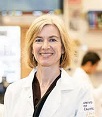
In 2012 Am. biochemist Jennifer Anne Doudna (1964-) et al. of UCB announce their discovery of the use of the protein Cas9 found in Streptococcus bacteria that works with guide RNA to act like scissors and slice up DNA, adapting it to work with different RNAs to edit different DNAs, making her a CRISPR star; in 2014 Doudna and E. Charpentier announce their discovery of Cas Phi, a super-tiny Cas protein found in bacteriophages that works on humans.
On Jan. 28, 2013 geneticists at USC announce that they've extended the lifespan of baker's yeast by 10x, equivalent to 800 years for humans by knocking out the RAS2 and SCH9 genes and putting it on a calorie-restricted diet.
On Feb. 27, 2013 a study pub. in Nature reports that the bacteriophage virus can steal the immune system of bacteria and use it against its host.
On Mar. 28, 2013 Stanford U. bioengineers pub. an article in Science reporting the first biological transistor made from DNA and RNA, which they call the transcriptor.
On Mar. 28, 2013 Alexei A. Sharov and Richard Gordon pub. the paper Life Before Earth, which claims that a reverse extrapolation of genetic complexity suggests that life originated 9.7B years ago, before the Earth was born.
On May 15, 2013 Cell announces the first verified creation of human stem cells through cloning by the same technique that produced Dolly the Cloned Sheep in 1996.
On May 28, 2013 researchers at the U. of Adelaide pub. an article in ACS Synthetic Biology describing Clonetegration, a 1-step bacterial genetic engineering process.
On June 5, 2013 researchers from UCLA announce the discovery of Multi-lineage Stress-Enduring (MUSE-AT) Stem Cells in adipose tissue, which can differentiate into virtually every human cell type without modification - a new meaning to the term fathead?
On June 6, 2013 researchers at Weill Cornell Medical College pub. an article in Cell reporting the discovery of a mechanism that guides the wiring of neural circuits in a developing brain.
On June 6, 2013 Jonas Frisen et al. of the Karolinska Inst. pub. an article in Cell reporting the use of C14 dating to establish that about 1.4K new neurons are created in the hippocampus each day during adulthood, with the rate declining modestly with age.
On June 7, 2013 Dennis O'Leary et al. of the Salk Inst. for Biological Studies pub. an article in Science announcing that input from the thalamus is required to determine how the cerebral cortex grows into separate functional areas, not genes alone.
On June 12, 2013 researchers at the U. of Penn. pub. a study in the Journal of Neuroscience that finds that a father's life stress exposure leaves a mark on his sperm that can affect the brain development of his offspring.
On June 21, 2013 scientists at the Scripps Research Inst. (TSRI) pub. an article in Journal of Neuroscience that a single gene mutation can destroy a key "window" of brain development permanently.
On June 25, 2013 scientists pub. an article in Nature announcing the discovery of the mechanism that points transcription in the right direction and tells it to skip over junk DNA.
Lysenko was right? On July 1, 2013 Roger Godschalk et al. of Maastrich U. pub. an article in The FASEB Journal reporting a pilot study indicating that gene mutations caused by a father's lifestyle can be inherited by his children and passed to grandchildren.
On July 17, 2013 Jeanne B. Lawrence et al. at UMass Medical School pub. an article in Nature showing that a naturally occurring X chromosome "off switch" can be rerouted to neutralize the extra chromosome causing Down Syndrome (Trisomy 21).
On July 19, 2013 researchers at Peking U. and Beijing Vitalstar Biotechnology pub. an article in Science reporting on their creation of induced pluripotent stem cells (iPSCs) from mouse somatic cells using a combination of seven small-molecule compounds sans genetic manipulations.
On July 29, 2013 researchers at UCLA and UNC pub. a study that indicates that happiness affects one's genes in their immune cells.
On Aug. 5, 2013 John Rasko, William Ritchie et al. at Centenary Inst. in Sydney, Australia pub. an article in Science reporting that 97% of so-called human junk DNA can actually play a significant roll in cell development.
On Aug. 20, 2013 Alexander B. Niculescu III et al. of Indiana U. pub. an article in Molecular Psychiatry reporting the finding of a series of RNA biomarkers in blood that might help identify people at risk for committing suicide.
On Sept. 1, 2013 researchers at Macquarie U., the U. of Adelaide, and Peking U. pub. an article in Nature Nanotechnology announcing the SuperDot, a nanocrystal with a special optical fiber that enables light to interact with nanoscale volumes of liquid, becoming a breakthrough in nanoscale measurement of living cells.
On Oct. 10, 2013 Rebecca Todd et al. of the U. of British Columbia pub. an article in Psychological Science reporting that the ADRA2b gene variant can cause people to perceive emotional events more vividly than others, predisposing them to focus on the negative.
In Dec. 2013 two small teams at MIT and Harvard U. led by Eric Lander disable all 20K genes growing in a Petri dish, one at a time; in 2007 it took an internat. $100M effort five years to disable all 20K genes in mouse DNA.
On Jan. 2, 2014 Japanese scientists Kazuya Iwamoto et al. pub. an article in Neuron announcing that a class of junk DNA retrotransposons called Long Interspersed Nuclear Elements (LINEs) (discovered in 1980), which make up 21.1% of the human genome might be responsible for schizophrenia.
On Jan. 9, 2014 Martin Leeb et al. of Cambridge U. pub. an article in Neuron describing a fast and comprehensive method for determining the function of genes using transposons (jumping genes).
On Jan. 14, 2014 Jan van Hest and Ruud Peters of Ribaud U. Nijmegen pub. an article in Angewandte Chemie announcing the creation of the first artificial cell containing organelles capable of carrying out the various steps of a chemical reaction.
On Jan. 30, 2014 researchers at Nanjing Medical U. and Yunnan Key Lab of Primate Biomedical Research in Kunming, China pub. an article in Cell reporting the creation of genetically-modified monkeys using a new method of DNA engineering known as CRISPR.
On Feb. 21, 2014 Boris Vinatzer pub. an article in PLoS ONE proposing a new naming system for all organisms based on their genome sequence.
On Mar. 10, 2014 after irregularities are found, Japanese scientist Teruhiko Wakayama calls for his study on stem cells that claims they can be created by putting mature animal cells in an acid bath to be withdrawn.
In Mar. 2014 an internat. team synthesizes SynIII, the first synthetic chromosome for yeast; only 15 more to go.
On Apr. 3, 2014 scientists at the U. of Va. announce the first fish embryo grown from stem cells.
On Apr. 17, 2014 scientists in South Korea pub. an article announcing the first therapeutic cloning of adults, creating stems cells from the skin cells of two adult men.
On Apr. 21, 2014 scientists at MIT announce a revolutionary advance in CRISPR, a rev. genome-editing technique that can correct adult genes and cure diseases.
On May 7, 2014 Floyd Romesberg et al. of the Scripps Research Inst. pub. an article in Nature announcing the first viable organism with two artficial DNA building blocks.
On May 8, 2014 Siegfried Hekimi et al. of McGill U. pub. an article in Cell reversing the "free radical theory of aging", proving that free radical production increases during aging because they combat aging.
On June 4, 2014 physicians at Am. Family Children's Hospital in Madison, Wisc. pub. an article in the New England Journal of Medicine reporting the first successful use of quick DNA sequencing to diagnose an illness.
On June 7, 2014 an infant born to grad student Razib Khan in Calif. becomes the first healthy person born in the U.S. with their entire genome deciphered in advance.
On July 21, 2014 Jonathan Thorn et al. of Brigham and Women's Hospital in Boston, Mass. announce a new way to make fully functional human platelets using human stem cells and a bioreactor.
On Nov. 13, 2014 Timothy Lu et al. of MIT pub. an article in Science announcing the first successful method for storing memory in bacterial genomes.
On Apr. 23, 2015 an internat. team of scientists pub. an article in Current Biology, announcing the first sequencing of the complete genome of the woolly mammoth.
On July 15, 2015 Li Jinsong et al. of the Shanghai Inst. for Biological Sciences pub. an article in Cell Stem Cell announcing the first mass production of high-quality artificial sperm, sans tails and the ability to swim.
On Oct. 16, 2015 scientists at Guangzhou Insts. of Biomedicine and Health pub. an article in Journal of Molecular Cell Biology reporting the first gene-edited dogs, a pair of beagles named Hercules and Tiangou, who have their myostatin genes deleted to make them more muscular and athletic.
On Dec. 21, 2015 Michael Johnson et al. at Imperial College London pub. an article in Nature Neuroscience announcing the discovery of brain gene clusters M1 and M3, which are linked to human intelligence.
On Mar. 1, 2016 scientists at Univ. College London pub. an article announcing the discovery of the single gene causing gray hair, which they believe can be turned off.
On Mar. 9, 2016 scientists in China pub. an article in Nature announcing the activation of stem cells in a human eye to grow a new lens.
On Mar. 24, 2016 Valda Vinson et al. pub. an article in Science announcing that it takes just 473 genes to make a bacterium.
On May 3, 2016 scientists at Cambridge U. pub. an article announcing that they have mapped all the genes that can cause breast cancer.
On May 17, 2016 the Nat. Academies of Science pub. a Study of Genetically-Modified Crops, concluding that they are as safe to eat as crops developed through traditional plant-breeding methods.
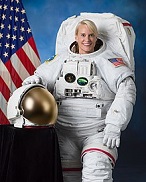
On July 6, 2016 NASA astronaut Kathleen Hallisey "Kate" Rubins (1978-) launches on a Soyuz spacecraft to the ISS, returning on Oct. 30 after performing the first genome sequencing in space using a MiniON device.
On July 11 , 2016 Jung-Hwan Albert Lim et al. at UCSD pub. an article in Nature Neuroscience reporting the first successful regeneration of the optic nerve in mice.
On Oct. 18, 2016 Japanese scientists announce that they have successfully hatched living mice from stem cells from a mouse tail turned into eggs in a petri dish.
On Nov. 18, 2016 engineers at the U. of Penn. announce the development of nanoscale muscles powered by DNA.
On Jan. 23, 2017 Floyd Romesberg et al. of the Scripps Research Inst. pub. an article in Proceedings of the Nat. Academy of Sciences announcing the first stable semi-synthetic organism, which adds synthetic bases X and Y to the usual A, T, C, and G.
In Apr. 2017 the FDA approves the first consumer DNA tests for disease risks, granting approval to 23andMe to market genetic tests for 10 diseases or conditions incl. Parkinson's, late-onset Alzheimer's, and celiac disease.
On June 11, 2017 Johannes Krause et al. of the Max Planck Inst. pub. a study in Nature Communications, using DNA from mummies to determine that ancient Egyptians were white not black, most closely related to the peoples of the Levant (E Mediterranean), with far less than the modern value of 8% of their genome shared with central Africans.
On July 19, 2017 Bridgett vonHoldt of Princeton U. et al. pub. an article in Science Advances, reporting that mutations on the game WBSCR17 cause stunted social development and overly-friendly behavior in dogs and domesticated wolves, similar to Williams-Beuron Syndrome in humans, making them into man's best friends.
On Sept. 14, 2017 Jean-Pierre Issa et al. of Lewis Katz School of Medicine at Temple U. pub. an article in Nature Communications revealing that calorie restriction slows the speed at which the epigenome changes with age, increasing lifespan.
In 2017 the first gene therapy treatments are approved by the FDA, incl. a treatment for childhood leukemia by genetically modifying a patient's blood cells to turn them into cancer killers, editing a patient's DNA while it's still inside his body, permanently changing their genome, and genetically modifying a human embryo to treat a common genetic heart disease.
On Mar. 21, 2018 an article is pub. in Nature Communications reporting that biologists at UCB have used CRISPR-Cas9 to give yeast cells the ability to make flavor components of hops, promising a large water savings in beer-making.
On Apr. 23, 2018 an article is pub. in Nature Chemistry describing the intercalatif motif (i-motif), with the structure of a twisted knot, becoming the first discovery of a non-double helix DNA component within living cells.
On Aug. 22, 2018 scientists at Oxford U. pub. an article in Nature announcing the 2012 discovery of 13-y.-o. Denisova 11 in the Denisova Cave in the Altai Mts. of Siberia, whose DNA is half-Neanderthal and half-Denisovan, becoming the first direct evidence of interbreeding.
On Aug. 22, 2018 scientists at Harvard Medical School pub. an article reporting the discovery that a protein calleed TCM1 forms a sound-and-motion-activated pore that converts sound and head movement into nerve signsl that travels to the brain, enabling hearing and balance.
On Sept. 4, 2018 Arcadi Navarro et al. of Pompeu Fabra U. pub. a study in Molecular Biology Evolution that identified 25 parallel mutations in human genes that were strongly conserved millions of years ago and influence human lifespans.
In Oct. 2018 twin Chinese girls Lulu and Nana are born, becoming the world's first germline genetically-edited babies; after a worldwide outcry, Chinese scientist He Jiankui is sentenced in late Dec. 2019 to three years in prison and 3M yuan fine.
On June 4, 2019 Amy Wagers et al. of Harvard U. pub. an article in Cell Reports reporting that stem cell genes can be edited in living systems rather than in a dish.
On July 10, 2019 Rajan Sekhon et al. of Clemson U. pub. an article in The Plant Cell reporting a study of senescence in maize, finding 2 genes that determine whether it will stay green via sugar molecules sending senescence signals after they are not moved away from the leaves where they are being made via photosynthesis, narrowing it down to 6-carbon sugars.
On June 23, 2020 researchers at Martin Luther U. Halle-Wittenberg pub. an article in The Plant Journal, announcing their discovery that ELF3 and GI genes control the internal clock of plants and tell them when it is time to flower.
On July 13, 2020 Zhijian Tu et al. pub. an article in Proceedings of the Nat. Academy of Sciences reporting that insertion of the male-determining gene Nix in the M locus of Aedes aegypti mosquitoes can convert females to non-biting fertile males, also that the gene myo-sex is needed for male flight.
On July 14, 2020 Karen Miga et al. of UC Santa Cruz pub. a paper in Nature announcing the first telomere-to-telomere assembly of a complete human X chromosome using nanopore sequencing that can span hundreds of thousands of repeating base pairs.
On July 23, 2020 Alison Van Eenennaam et al. of UCD announce the birth of bull calf Cosmo, who was genome-edited in the embryo stage using CRISPR to produce 75% male offspring, becoming the first targeted gene knock-in for large sequences of DNA via embryo-mediated genome editing in cattle.
On July 27, 2020 Ting Wu and Shyamtanu Chattoraj of the Wyss Inst. pub. an article in Nature Methods describing their OligoFISSEQ suite of techniques for visualizing regions of human DNA and creating 3-D maps of chromosomes that raise the bar by using Oligopaints, computer-designed probes that attach to fluorescent tags to specific DNA sequences.
On Aug. 6, 2020 San Diego Zoo clones the first Przewalski's horse, named Kurt.
In early Aug. 2020 geneticists rename 27 genes to keep Microsft Excel from treating them as dates and reformatting them, incl. MARCH1 to MARCHF1, and SEPT1 to SEPTINI.
On Aug. 5, 2020 Blackstone announces an angreement with family history business Ancestry.com to acquire its database for $4.7B.
On Aug. 29, 2020 Didier Trono et al. at EPFL pub. an article in Science Advances anounces their discovery that the 4.5M transposable elements (DNA sequences that jump around and help regulate gene expression by binding transcription factors that regulate the rate of transcription of DNA to RNA) play a significant role in influencing human brain development by partnering with Kruppel-associated box-containing zinc finger proteins (KZFPs).
In Sept. 2020 Lars and Arne Ittner of Macquarie U. pub. an article in Acta Neuropathologica describing the first gene-therappy approach for treating advanced forms of Alzheimer's by activating the brain enzyme p38gamma.
On Dec. 4 , 2020 researchers at La Jolla Inst. for Immunology (LJI) pub. an article in Journal of Experimental Medicine announcing the discovery of elongated neutrophil-derived structures (ENDS) in people with sepsis, which break off of immune cells and change shape as they travel through the body.
On Dec. 28, 2020 researchers at Scripps Research pub. a study in Angewandte Chemie describing their discovery that the simple compound diamidophosphate (DAP) could have chemically combined to create DNA building blocks called deoxynucleosides into strands of primordial DNA.